Great choice! Your favorites are temporarily saved for this session. Sign in to save them permanently, access them on any device, and receive relevant alerts.
- Sailboat Guide

1995 Gross Fastback 43 Catamaran
- Description
Seller's Description
One of the well known and highly respected Fastback 43s. This one was launched in Western Australian by its current and original owner. She has cruised extensively. She performs beautifully under sail with the ability to raise the drive leg. This also allows her to take the bottom when combined with her dagger board, kick up rudders and solid GRP hulls. One of the delightful features of this design is the forward deck lounge area, as well as a secure and safe place to sit it provides an excellent stowage space for surfboards and similar watercraft. She represents exceptional value and is a genuine step aboard and cruise away proposition.
- Length: 13.9m (43 feet)
- Draft: 1m/ 1.8m
- Keel: Daggerboard
- Location: Brisbane, QLD
- Mast: Anodised Aluminium
- Mainsail: Dacron
- Genoa x 2: Dacron
- Spinnaker: Nylon
- Lazy Jack Boom Bag
- Brand: Yanmar
- Horsepower: 36HP
- Drive: Retractable leg
- Fuel Type: Diesel
- Fuel Tank: 240L
- Winches: Anderson x 7
- Anchor Winch: Electric
- Deck Shower: Yes
- Deck Wash: Yes
- BBQ: Weber Baby Q
- Gas Bottles: 3 x 9KG
- Log/Sounder: Horizon
- Wind: Horizon
- GPS: Garmin
- Radar Furono
- Autopilot: Raymarine
- Solar Panels: 2 x 45W and 3 x 80W
- Genset: Honda 2KVA
- Wind Generator: Airmarine 400
- Shore Power: Yes
- Stove: Dometic 4 burner LPG with oven
- Microwave: Panasonic
- Sink: stainless steel
- Water Tanks: 2 x 300L
- Watermaker: Poweer Survivor 35
- Fridge/Freezer: Waeco 2 door 180L
Accommodation
- Berths: 2 Queen Berths
- Toilet: 2 with macerator
- Holding tank: Yes
- Tender: Alicraft 3.1m
- Outboards: Yamaha 3hp, Tohatsu 8hp
Rig and Sails
Auxilary power, accomodations, calculations.
The theoretical maximum speed that a displacement hull can move efficiently through the water is determined by it's waterline length and displacement. It may be unable to reach this speed if the boat is underpowered or heavily loaded, though it may exceed this speed given enough power. Read more.
Classic hull speed formula:
Hull Speed = 1.34 x √LWL
Max Speed/Length ratio = 8.26 ÷ Displacement/Length ratio .311 Hull Speed = Max Speed/Length ratio x √LWL
Sail Area / Displacement Ratio
A measure of the power of the sails relative to the weight of the boat. The higher the number, the higher the performance, but the harder the boat will be to handle. This ratio is a "non-dimensional" value that facilitates comparisons between boats of different types and sizes. Read more.
SA/D = SA ÷ (D ÷ 64) 2/3
- SA : Sail area in square feet, derived by adding the mainsail area to 100% of the foretriangle area (the lateral area above the deck between the mast and the forestay).
- D : Displacement in pounds.
Ballast / Displacement Ratio
A measure of the stability of a boat's hull that suggests how well a monohull will stand up to its sails. The ballast displacement ratio indicates how much of the weight of a boat is placed for maximum stability against capsizing and is an indicator of stiffness and resistance to capsize.
Ballast / Displacement * 100
Displacement / Length Ratio
A measure of the weight of the boat relative to it's length at the waterline. The higher a boat’s D/L ratio, the more easily it will carry a load and the more comfortable its motion will be. The lower a boat's ratio is, the less power it takes to drive the boat to its nominal hull speed or beyond. Read more.
D/L = (D ÷ 2240) ÷ (0.01 x LWL)³
- D: Displacement of the boat in pounds.
- LWL: Waterline length in feet
Comfort Ratio
This ratio assess how quickly and abruptly a boat’s hull reacts to waves in a significant seaway, these being the elements of a boat’s motion most likely to cause seasickness. Read more.
Comfort ratio = D ÷ (.65 x (.7 LWL + .3 LOA) x Beam 1.33 )
- D: Displacement of the boat in pounds
- LOA: Length overall in feet
- Beam: Width of boat at the widest point in feet
Capsize Screening Formula
This formula attempts to indicate whether a given boat might be too wide and light to readily right itself after being overturned in extreme conditions. Read more.
CSV = Beam ÷ ³√(D / 64)
This listing is presented by MultihullCentral.com . Visit their website for more information or to contact the seller.
View on MultihullCentral.com
Embed this page on your own website by copying and pasting this code.
- About Sailboat Guide
©2024 Sea Time Tech, LLC
This site is protected by reCAPTCHA and the Google Privacy Policy and Terms of Service apply.

Yacht Buddha
43' 1999 custom gross fastback 43 carnarvon wa australia ensign yacht brokers sail diesel single $144,501 on market: 40 days.

Ready for quick comfortable cruising? This Fastback 43 has been extensively set up and is ready to set sail to her next destination. The second to last 43 produced she was professional built and fitted out by designer/builder John Gross. The interior has
Purchase More Information
Consult with the Buddha for $19.99. We have additional information available.
Price History
Inactive comparables.
- Post Code *
- Message (hidden)
- Email This field is for validation purposes and should be left unchanged.
- Privacy Policy: We hate spam and promise to keep your e-mail address safe.

- Testimonials
- Job Vacancies
- Sell my Catamaran
- Service Centre
- Owner Blogs
- YouTube Channel
- Seabbatical Book
- Multihull Cruising Yacht Club
- Seabbatical Webinars
- Plan Your Seabbatical
- How To Finance A Charter Boat
- 6 Steps To Starting Your Own Charter Business
- New Zealand Offices
- Seawind Catamarans
- HH Catamarans
- Longreach Catamarans
- Corsair Trimarans
- Garcia Explocat 52
- Cruz Club Membership
- Learn To Sail A Cat
- Pittwater Bareboat Experience
- Overnight Experience
- Skippered Charter Hire
- Charter Boat Ownership
Key Features
- Length: 13.9m (43 feet)
- Draft: 1m/ 1.8m
- Keel: Daggerboard
- Location: Brisbane, QLD
- Mast: Anodised Aluminium
- Mainsail: Dacron
- Genoa x 2: Dacron
- Spinnaker: Nylon
- Lazy Jack Boom Bag
- Brand: Yanmar
- Horsepower: 36HP
- Drive: Retractable leg
- Fuel Type: Diesel
- Fuel Tank: 240L
Exterior Hull & Deck
- Winches: Anderson x 7
- Anchor Winch: Electric
- Deck Shower: Yes
- Deck Wash: Yes
- BBQ: Weber Baby Q
- Gas Bottles: 3 x 9KG
- Log/Sounder: Horizon
- Wind: Horizon
- GPS: Garmin
- Radar Furono
- Autopilot: Raymarine
- Solar Pannels: 2 x 45W and 3 x 80W
- Genset: Honda 2KVA
- Wind Generator: Airmarine 400
- Shore Power: Yes
Interior Features
- Stove: Dometic 4 burner LPG with oven
- Microwave: Panasonic
- Sink: stainless steel
- Water Tanks: 2 x 300L
- Watermaker: Poweer Survivor 35
- Fridge/Freezer: Waeco 2 door 180L
- Berths: 2 Queen Berths
- Toilet: 2 with macerator
- Holding tank: Yes
Additional Information
- Tender: Alicraft 3.1m
- Outboards: Yamaha 3hp, Tohatsu 8hp
One of the well known and highly respected Fastback 43s. This one was launched in Western Australian by its current and original owner. She has cruised extensively. She performs beautifully under sail with the ability to raise the drive leg. This also allows her to take the bottom when combined with her dagger board, kick up rudders and solid GRP hulls. One of the delightful features of this design is the forward deck lounge area, as well as a secure and safe place to sit it provides an excellent stowage space for surfboards and similar watercraft. She represents exceptional value and is a genuine step aboard and cruise away proposition.
USED CATAMARANS AND TRIMARANS
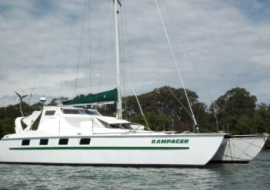
Gross Fastback 43 "Rampager"
One of the well known and highly respected Fastback 43s. This one was launched in Western Australian by its current and original owner. She ...

NEWSLETTER SIGN UP
Catamaran sailing school.


1300 852 620
Multihull Central - Sydney Multihull Central Marina 20 Chapman Road Annandale, NSW 2038
02 9810 5014
Multihull Central - Gold Coast The Boat Works North Yard | 199 Beattie Rd Coomera, QLD 4209
07 3393 5550
Multihull Central - New Zealand Unit 25/25 Baffin Street Marina Building, Port Opua-Bay of Islands, New Zealand
+64 274 542 242
- SELL MY MULTIHULL
- TESTIMONIALS
- SEAWIND CATAMARANS
- HH CATAMARANS
- LONGREACH CATAMARANS
- CORSAIR TRIMARANS
- UNDER $100K
- UNDER $200K
- UNDER $300K
- UNDER $400K
- SOUTH PACIFIC
- New Zealand

Fastback 43 Custom
Used yachts for sale, sail catamarans 40ft > 50ft, fastback boats for sale, fastback 43 boats for sale.
Fulfil Your Desire
For something truly exceptional, design features, 033eeb3a033c848f922d9cceef63b399.
f76abb335b75e180cdbdb8c2ef0387ca
Multihull World. The Need For Speed. Comparing three Australian production catamarans
The need for speed The production multihull industry in Australia is deservedly proud of its ability to build excellent products at fair prices. I strongly believe that we have some of the best production builders in the world. Of course we also have access to some of the best designers and custom builders as well.
THE PARADIGM till now has been, production builders build excellent cruising boats with the more performance oriented requirements being handled by custom designers/builders.
Change however is well and truly on the agenda and in that regard we recently examined three production boats that have broadened the focus and, as a result, the choices for owners looking for performance enhancement.
The Stallion Marine built Spirited 380 is already deservedly regarded as being at the sharp end of performance production cruising cats. Stallion, in conjunction with Allyacht Spars and Ullman Sails are however taking another step in the area of innovation in genuine performance cruising cats.
Lightwave Yachts build some excellent cruising boats with more than reasonable performance figures, they too have identified a need to offer something more for the performance minded sailor, and have recently launched a Lightwave 38 with minor modifications to enhance performance.
Lightwave has also taken control of the very rapid Raider series and in conjunction with Allyacht Spars are developing two versions of the Raider, both designed to build a strong ‘one design’ class and offer line honours performance at the same time.
The following vignettes are not designed to be in-depth boat tests – all these boats have been well reviewed before, they do however provide an insight into design considerations, owner desires and performance expectations.
Lightwave 38 – with board
Nigel and Janette have owned a string of fast boats, most recently a Corsair 36 and a Corsair Sprint. They enjoyed all their tris and gained a lot of performance as well as cruising enjoyment from their boats. Recently they decided to look for something with a little more comfort and settled on the Lightwave 38 design. Nigel however wanted his boat to have dagger board/s. This lead to significant discussions and engineering review by Roger Overell and the team at Lightwave and finally it was determined that it could be done and done in such a way so as to not compromise the strength or other virtues of the boat.
The build was also approached with an eye on weight, again strength was not to be compromised but where an opportunity to lighten the Lightwave presented it self, either through fitout or build approaches, it was taken.
The result was Cat Balou, a Lightwave 38 with a single dagger board built in.
According to Roger Overell: “We took the approach of meeting the customer’s needs, but only after we were able to satisfy ourselves that all other virtues of our boat would remain and that strength and reliability were not compromised. Accordingly we developed a process of building the single daggerboard into the pre existing mini keel. This provided a strong, almost ready made housing for the board, maintained mini keel protection to the rudders and props and ensured that the boat was able to be beached with confidence”.
Roger was happy with the design and build outcome and thus far Nigel is very pleased with the realisation of the intended performance gains. Nigel and Janette have only raced it in social WAGS/SAGS style races thus far, but he has seen his handicap tumble as the boat demonstrates its potential. The races are handicap starts and the results thus far see Cat Balou starting after Farr 1020s and other excellent monos, alongside or after Farrier 680s a Rogers 32 and a Fastback
The only boats with a later handicap start are Corsair Sprints, an F31 and an open bridgedeck Crowther.
Particularly pleasing to Nigel and Janette is the performance to windward. I had the opportunity to spend a few hours aboard on a SAGS race recently. We sailed out of Scarborough near Brisbane and proceeded to the race start. We started at the rear of the fleet and I was pleasantly surprised at the way we pointed higher and sailed faster than some very good boats, including a lot of good monos that ‘will always outpoint a cat’.
We continually made ground on the fleet and by the last rounding mark we were with the leading boats and ultimately went on to come home line ball with a boat that started a fair bit earlier than us. What was also interesting was that the race was in very light airs, traditionally not the preferred winds for a cruising cat.
It is a very impressive variation on the Lightwave 38 theme and if you are looking for a performance edge, it’s a concept well worth exploring. And underneath it all is a Lightwave 38, which means there is a strong capable and comfortable boat that can take you almost anywhere you wish to sail.
Raider One design and other developments
One of the few high performance production boats in the market is the Tony Grainger designed Raider. A 9.2m beach cat on steroids the Raider has a solid record of race performances, including two Brisbane to Gladstone OMR wins.
The Raider had been the product of the All-Yacht Spars team with Geoff and Joel Berg leading the development and sailing testing of the boats. Recently the Berg family and Roger Overell from Lightwave Yachts got together and now the Raider is being manufactured by Lightwave. One of the key developments is the development of a One Design class for this boat.
Previously the Raider 302 design, as it was known, had proven its performance credentials in offshore racing around the world, and has now been formed into a true ‘One Design’ International Class. Lightwave Yachts and Allyacht Spars are joint campaign partners, and are working with multihull racing champion, Jamie Morris.
The Raider One Design can reach speeds of 25kts offshore in 20-25kts wind. It will fly a hull in 12kts, creating a spectacular sight.
The Raider One Design is a very fast sports cat which can be demounted and towed on a road trailer. It can also be containerised so it can be delivered to overseas buyers or to compete in various international events around the world.
According to Roger Overell “The Raider One Design is intended for offshore and coastal racing and the teams compete under strict one-design rules, producing real competitive sailing and crew work. The boats are offered as a Grand Prix or Club Sports package, the design is an open bridgedeck cat, featuring 1.8m headroom in the hulls and kick-up balanced rudders for sharp handling characteristics. Construction includes premium quality foam glass construction, Carbon boards and rudders, dyform rigging and a fantastic blend of easy to operate sailing systems. Both packages offer accommodation with the Club Sports incorporating a cruising pack onto the Raider One Design hulls.”
By the time this article is published the first pair of these boats will have had an intriguing match race in the 2008 Brisbane to Gladstone. Jamie Morris and Joel Berg will each be leading a crew on a pair of these boats. Jamie and Joel are good mates ashore but I reckon there will be plenty of willing sailing and a deep desire to get one up on the other guy.
Jamie is a multiple Gladstone line honours trophy winner with Simply The Best and Flat Chat and the equally skilled Joel is the defending Australian Multihull Offshore racing champion with AYS Raider. Jamie and Joel have worked side by side over several months building their identical catamarans.
There will be much interest in this battle and it will provide an excellent proving ground for the new one design class. The Raider is another variation on the need for speed theme.
Stallion Marine The benchmark in performance cruising
And squarely in the middle of these two approaches to performance sailing is the latest version of the Stallion Marine Spirited 380 Craig Schionning designed cruising cat.
Already a cat at the leading edge of the performance dimensions, the team at Stallion in conjunction with All Yacht spars have developed a carbon rig for the Stallion Spirited 380. Working along side these guys is the Ullman sails crew who have developed a sophisticated sail design and lay-up process.
The basic excellent design of the Stallion remains with all the positives that are offered in that package. In terms of performance per dollar in a genuinely comfortable boat, the Stallion was already at the front of the pack. This new variant will enhance the reputation for performance sailing that the Stallion has already established.
This project is not simply a case of slapping a bigger rig on a standard boat. The boat has been carefully assessed from the ground up to determine where appropriate modifications can be made. The basic premise of the Stallion as a safe easy to handle and comfortable cruiser remains and is enhanced by contemporary approaches in terms of rigs, sails and systems.
The rig for the new boat is a carbon mast developed by AllYacht Spars. It’s stiffer, stronger and lighter than an aluminium section normally fitted to this boat. It reduces weight aloft as well as reducing weight overall by around 100kg. As well as enhancing performance, the lessening of weight up high leads to a better motion and more comfort. Shrouds and associated rigging are PBO and dyform.
Sails which are capable of taking advantage of the opportunities offered by this rig are critical. Ullman Sails on the Sunshine Coast have been involved with Stallion Marine since its inception and have worked alongside the Stallion and Allyacht team to design leading edge sails that can use the new rig to its best advantage. The sails are a Fiberpath Membrane design with the fabric constructed in such a way that the fibres are aligned to the curved load paths of the sail and then laminated in that position, which means lower stretch whereby the designed sail shape is achieved and more importantly maintained over the life of the sail. A key feature and benefit of Fiberpath sails is their ability to maintain their optimum designed sail shape across a wide range of wind strengths. The sails also weigh less than traditional panelled sails and this adds to the overall design focus on reducing weight – especially aloft. Importantly on a performance cruising multi the sails can be constructed from technora and/or carbon fibres individually or blended, with these fibres offering a high degree of UV protection, and laminated with a choice of finishes from film/film for grand prix racing, film/taffeta for club racers, or the durability of taffeta/taffeta for high performance cruising. The superior lamination process formed by a latest state-of-the-art lamination machine also results in a loadpath sail that is long lasting and durable for cruising applications. All of these key features are very important in a boat that will spend a fair bit of time cruising and needs a durable, long lasting, and low stretch set of sails.
The unified approach continues through all systems, with the electronics and electrical systems being the focus of careful design thought. Stallion has partnered with Raymarine in developing a unified system that provides high levels of state-of-the-art advancement such as the small format colour screen ST70 multifunction instrument series. The whole electrical and electronic system has been carefully built to ensure that the cruiser lacks little but that each item contributes to weight saving and reliability. This ranges from innovative approaches to radio cables, instruments that need half as much power and along with other electrical careful design (LED lights etc) leads to an opportunity for batteries that can be smaller whilst providing the same cruising convenience.
The Stallion is clearly the benchmark in high performance cruising boats, and this latest project demonstrates where the industry will head over the longer term to maintain strength and comfort whilst enhancing performance and enjoyment.
As a wise sailor once said you don’t have to go fast but all things being equal it’s a lot more fun.
This new Stallion option will be on display at the Sanctuary Cove Boat Show. Sounds like the show will be very interesting this year with a lot of different boats and philosophies all on show. I can’t wait to see the new Stallion; I thought the current one was pretty bloody impressive. More importantly I can’t wait to get out for a sail on one.
So there you have it. Three different boats with a common theme, more performance. I am very impressed with the level of innovation shown by our local designers and builders and strongly recommend that when you are considering a new boat you look at all the options and talk with all the builders and designers to see what developments are on the way.
Performance can be had in many ways, but there is a truism on multihulls and that is ‘add lightness’. Sometimes you can actually transform your own boat by simply unloading half the stuff that is aboard. Try it sometime and you will get a glimpse of what some of the leading edge boats like Lightwave and Stallion are like.
But to really realise the benefits of lightness you need a boat engineered from the ground up, and that’s where these designs offer performance with confidence.
Download PDF
Lightwave Yachts
- Previous Models
Lightwave 46
Lightwave 55.
“We Cannot Discover New Oceans Unless We Have The Courage To Lose Sight Of The Shore” – Faulkner
Plumbing System
The Lightwave 46 has 800L of fresh water & 800L of diesel, in tanks that are built directly into the hull. High quality, purpose grade materials are used in this labour intensive construction method which guarantees an extremely high-quality product that will last for the lifetime of the boat. Dual freshwater pumps provided piece of mind through redundancy. A water transfer line is built into the system to allow water to travel between either tank. Fresh water vacuum toilets that use minimal fresh water (less than 400ml per flush) are a standard feature on the Lightwave 46, eliminating the stale saltwater smell that can encroach the cabin area. A saltwater system is also fitted to the vessel to allow an anchor wash, saltwater tap in the galley and hose in the cockpit.
Electrical System
The Lightwave 46 is designed for self-sufficient blue water cruising. The vessel is supplied with a 12-volt DC and a 240-volt AC electrical system. A 600Ah AGM battery system is offered on the vessel with an optional 660Ah lithium-ion battery bank. There are various solar options producing up to 2000kw of power. There is also the option to have a 4Kw AC diesel generator which is coupled with the inverter to allow for a high output. All areas of the vessels electrics are designed to be easily accessible and traceable with minimal disruption to the boats systems. Electrical components on the Lightwave 46 are carefully selected to ensure a minimum power consumption is achieved. Onboard systems incorporate the latest in technology, allowing remote control and monitoring of critical power systems, battery and charging status, tank levels, bilge pumps, aerial and security CCTV as well as an array of other custom options.
Engineering Systems
The Lightwave 46 offers a very spacious area in the external engine rooms, to accommodate the standard 50hp engines & other engineering systems. All steering components as well as the optional generator are housed in the engine rooms, carefully positioned for ease of access for servicing and maintenance. The engine rooms are separated from the accommodation area with a bulkhead lined in sound dampening material to defer noise, heat and odour from entering the cabins. The engine rooms are also accessible from the inside of the boat if required.
Sailing Systems
Designed with the priority for the ultimate sailing experience , t he deck layout and sail ing systems are configured for ease of handling while shorthanded. The line system on the Lightwave 4 6 has been designed so all lines are organised and accessible from an area where the sails can be easily observed. Lines all lead to the cockpit and travel under serviceable fibreglass boards which not only keep the lines organised, but also remove possible tripping hazard s . Hanging points are purposely provided creating a neat and organised place for line tails to be stored. Anderson winches and Ronstan deck gear are s uperiorly selected as standard equipment, with optional electric winches also available. A bridal main sheet system is cleverly applied to eliminate the safety concerns of a traveller car system traditionally used on catamarans.
Select your desired option below to share a direct link to this page

The Lagoon 43 is the promise of memorable moments at sea! Whether cruising as a couple, with family, or with friends, this adptable catamaran will win you over. Designed and engineered to be adaptable, by nature!

A GENEROUS CATAMARAN
The new hull form of the Lagoon 43 features generous interior volumes – as well as larger berths, with greater dimensions in every cabin – offering unprecedented living space for her category.
In the owner’s cabin, a large forward berth with an en suite head and shower aft provides increased living space, undisturbed by engine noise. This layout is similar to those found aboard much larger yachts.

AN ENJOYABLE CATAMARAN

AN ADAPTABLE CATAMARAN
Lagoon has reimagined life on board, presenting a versatile boat with modular boundaries. This advance makes it possible to transform the space, connecting the interior and the exterior, the saloon and the cockpit, according to preference.
Create numerous arrangements quickly and easily, with a dining table able to accommodate up to 12 people. An inviting new living area is formed for gathering and sharing a moment together with family or with friends.

SPECIFICATIONS
- Length Overall 13,92 m
- Beam Overall 7,69 m
- Draft 1,4 m
- Air Draft 19,94 m
- Light displacement (CE) 13,319 T
- Upwind sail area 105 m²
- Square top mainsail 68 m²
- Furling genoa 37 m²
- Engine power 2 x 57 CV
- Fuel capacity 570 L
- Number of berths 6 a 8
- CE Certification A:12; B:14; C:20; D:30
MORE INFORMATION ABOUT LAGOON 43
Along with the Lagoon 60 , the Lagoon 43 will be on display during the next Yachting Cannes Festival from September 10 to 15, 2024.

Port Ginesta Local 804. Les Botigues de Sitges
- ABOUT LAGOON
- LEGAL NOTICE
- DATA PROTECTION
Seleccione el departamento con el que desea contactar
This site is protected by reCAPTCHA and the Google Privacy Policy and Terms of Service apply.
- GAMA LAGOON
- SALONES Y EVENTOS
- BLOG Y NOTICIAS
- NUESTRO EQUIPO
- SOBRE LAGOON
Select the department you wish to contact
- LAGOON RANGE
- HALLS AND EVENTS

- New comments
- Military Photos
- Russian Military
- Anti-Aircraft
- SA-21/S-400 Triumf

92N6E Radar, S-400
- Oct 18, 2010
Media information
Share this media.
- This site uses cookies to help personalise content, tailor your experience and to keep you logged in if you register. By continuing to use this site, you are consenting to our use of cookies. Accept Learn more…
albert einstein biography early life
Albert Einstein
next >>>, growing up and early life.

- Growing up Einstein
- Education, the Patent Office, and Marriage
- The Miracle Year
- Theory of General Relativity
- Academic Career and Nobel Prize
- Leaving Germany and World War II
- More Discoveries
- Later Life and Death
- Albert Einstein Quotes and Bibliography
- History Classics
- Your Profile
- Find History on Facebook (Opens in a new window)
- Find History on Twitter (Opens in a new window)
- Find History on YouTube (Opens in a new window)
- Find History on Instagram (Opens in a new window)
- Find History on TikTok (Opens in a new window)
- This Day In History
- History Podcasts
- History Vault
By: History.com Editors
Updated: May 16, 2019 | Original: October 27, 2009

The German-born physicist Albert Einstein developed the first of his groundbreaking theories while working as a clerk in the Swiss patent office in Bern. After making his name with four scientific articles published in 1905, he went on to win worldwide fame for his general theory of relativity and a Nobel Prize in 1921 for his explanation of the phenomenon known as the photoelectric effect. An outspoken pacifist who was publicly identified with the Zionist movement, Einstein emigrated from Germany to the United States when the Nazis took power before World War II. He lived and worked in Princeton, New Jersey, for the remainder of his life.
Einstein’s Early Life (1879-1904)
Born on March 14, 1879, in the southern German city of Ulm, Albert Einstein grew up in a middle-class Jewish family in Munich. As a child, Einstein became fascinated by music (he played the violin), mathematics and science. He dropped out of school in 1894 and moved to Switzerland, where he resumed his schooling and later gained admission to the Swiss Federal Polytechnic Institute in Zurich. In 1896, he renounced his German citizenship, and remained officially stateless before becoming a Swiss citizen in 1901.
Did you know? Almost immediately after Albert Einstein learned of the atomic bomb's use in Japan, he became an advocate for nuclear disarmament. He formed the Emergency Committee of Atomic Scientists and backed Manhattan Project scientist J. Robert Oppenheimer in his opposition to the hydrogen bomb.
While at Zurich Polytechnic, Einstein fell in love with his fellow student Mileva Maric, but his parents opposed the match and he lacked the money to marry. The couple had an illegitimate daughter, Lieserl, born in early 1902, of whom little is known. After finding a position as a clerk at the Swiss patent office in Bern, Einstein married Maric in 1903; they would have two more children, Hans Albert (born 1904) and Eduard (born 1910).
Einstein’s Miracle Year (1905)
While working at the patent office, Einstein did some of the most creative work of his life, producing no fewer than four groundbreaking articles in 1905 alone. In the first paper, he applied the quantum theory (developed by German physicist Max Planck) to light in order to explain the phenomenon known as the photoelectric effect, by which a material will emit electrically charged particles when hit by light. The second article contained Einstein’s experimental proof of the existence of atoms, which he got by analyzing the phenomenon of Brownian motion, in which tiny particles were suspended in water.
In the third and most famous article, titled “On the Electrodynamics of Moving Bodies,” Einstein confronted the apparent contradiction between two principal theories of physics: Isaac Newton’s concepts of absolute space and time and James Clerk Maxwell’s idea that the speed of light was a constant. To do this, Einstein introduced his special theory of relativity, which held that the laws of physics are the same even for objects moving in different inertial frames (i.e. at constant speeds relative to each other), and that the speed of light is a constant in all inertial frames. A fourth paper concerned the fundamental relationship between mass and energy, concepts viewed previously as completely separate. Einstein’s famous equation E = mc2 (where “c” was the constant speed of light) expressed this relationship.
From Zurich to Berlin (1906-1932)
Einstein continued working at the patent office until 1909, when he finally found a full-time academic post at the University of Zurich. In 1913, he arrived at the University of Berlin, where he was made director of the Kaiser Wilhelm Institute for Physics. The move coincided with the beginning of Einstein’s romantic relationship with a cousin of his, Elsa Lowenthal, whom he would eventually marry after divorcing Mileva. In 1915, Einstein published the general theory of relativity, which he considered his masterwork. This theory found that gravity, as well as motion, can affect time and space. According to Einstein’s equivalence principle–which held that gravity’s pull in one direction is equivalent to an acceleration of speed in the opposite direction–if light is bent by acceleration, it must also be bent by gravity. In 1919, two expeditions sent to perform experiments during a solar eclipse found that light rays from distant stars were deflected or bent by the gravity of the sun in just the way Einstein had predicted.
The general theory of relativity was the first major theory of gravity since Newton’s, more than 250 years before, and the results made a tremendous splash worldwide, with the London Times proclaiming a “Revolution in Science” and a “New Theory of the Universe.” Einstein began touring the world, speaking in front of crowds of thousands in the United States, Britain, France and Japan. In 1921, he won the Nobel Prize for his work on the photoelectric effect, as his work on relativity remained controversial at the time. Einstein soon began building on his theories to form a new science of cosmology, which held that the universe was dynamic instead of static, and was capable of expanding and contracting.
Einstein Moves to the United States (1933-39)
A longtime pacifist and a Jew, Einstein became the target of hostility in Weimar Germany, where many citizens were suffering plummeting economic fortunes in the aftermath of defeat in the Great War. In December 1932, a month before Adolf Hitler became chancellor of Germany, Einstein made the decision to emigrate to the United States, where he took a position at the newly founded Institute for Advanced Study in Princeton, New Jersey . He would never again enter the country of his birth.
By the time Einstein’s wife Elsa died in 1936, he had been involved for more than a decade with his efforts to find a unified field theory, which would incorporate all the laws of the universe, and those of physics, into a single framework. In the process, Einstein became increasingly isolated from many of his colleagues, who were focused mainly on the quantum theory and its implications, rather than on relativity.
Einstein’s Later Life (1939-1955)
In the late 1930s, Einstein’s theories, including his equation E=mc2, helped form the basis of the development of the atomic bomb. In 1939, at the urging of the Hungarian physicist Leo Szilard, Einstein wrote to President Franklin D. Roosevelt advising him to approve funding for the development of uranium before Germany could gain the upper hand. Einstein, who became a U.S. citizen in 1940 but retained his Swiss citizenship, was never asked to participate in the resulting Manhattan Project , as the U.S. government suspected his socialist and pacifist views. In 1952, Einstein declined an offer extended by David Ben-Gurion, Israel’s premier, to become president of Israel .
Throughout the last years of his life, Einstein continued his quest for a unified field theory. Though he published an article on the theory in Scientific American in 1950, it remained unfinished when he died, of an aortic aneurysm, five years later. In the decades following his death, Einstein’s reputation and stature in the world of physics only grew, as physicists began to unravel the mystery of the so-called “strong force” (the missing piece of his unified field theory) and space satellites further verified the principles of his cosmology.

HISTORY Vault: Secrets of Einstein's Brain
Originally stolen by the doctor trusted to perform his autopsy, scientists over the decades have examined the brain of Albert Einstein to try and determine what made this seemingly normal man tick.

Sign up for Inside History
Get HISTORY’s most fascinating stories delivered to your inbox three times a week.
By submitting your information, you agree to receive emails from HISTORY and A+E Networks. You can opt out at any time. You must be 16 years or older and a resident of the United States.
More details : Privacy Notice | Terms of Use | Contact Us
Biography Online

Albert Einstein Biography
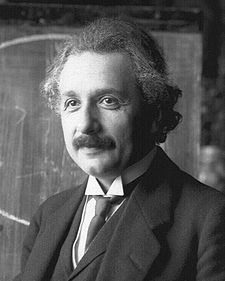
Einstein is also well known as an original free-thinker, speaking on a range of humanitarian and global issues. After contributing to the theoretical development of nuclear physics and encouraging F.D. Roosevelt to start the Manhattan Project, he later spoke out against the use of nuclear weapons.
Born in Germany to Jewish parents, Einstein settled in Switzerland and then, after Hitler’s rise to power, the United States. Einstein was a truly global man and one of the undisputed genius’ of the Twentieth Century.
Early life Albert Einstein
Einstein was born 14 March 1879, in Ulm the German Empire. His parents were working-class (salesman/engineer) and non-observant Jews. Aged 15, the family moved to Milan, Italy, where his father hoped Albert would become a mechanical engineer. However, despite Einstein’s intellect and thirst for knowledge, his early academic reports suggested anything but a glittering career in academia. His teachers found him dim and slow to learn. Part of the problem was that Albert expressed no interest in learning languages and the learning by rote that was popular at the time.
“School failed me, and I failed the school. It bored me. The teachers behaved like Feldwebel (sergeants). I wanted to learn what I wanted to know, but they wanted me to learn for the exam.” Einstein and the Poet (1983)
At the age of 12, Einstein picked up a book on geometry and read it cover to cover. – He would later refer to it as his ‘holy booklet’. He became fascinated by maths and taught himself – becoming acquainted with the great scientific discoveries of the age.
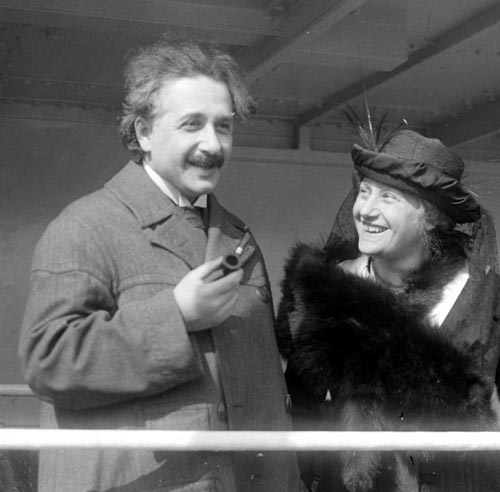
Albert Einstein with wife Elsa
Despite Albert’s independent learning, he languished at school. Eventually, he was asked to leave by the authorities because his indifference was setting a bad example to other students.
He applied for admission to the Federal Institute of Technology in Zurich. His first attempt was a failure because he failed exams in botany, zoology and languages. However, he passed the next year and in 1900 became a Swiss citizen.
At college, he met a fellow student Mileva Maric, and after a long friendship, they married in 1903; they had two sons before divorcing several years later.
In 1896 Einstein renounced his German citizenship to avoid military conscription. For five years he was stateless, before successfully applying for Swiss citizenship in 1901. After graduating from Zurich college, he attempted to gain a teaching post but none was forthcoming; instead, he gained a job in the Swiss Patent Office.
While working at the Patent Office, Einstein continued his own scientific discoveries and began radical experiments to consider the nature of light and space.
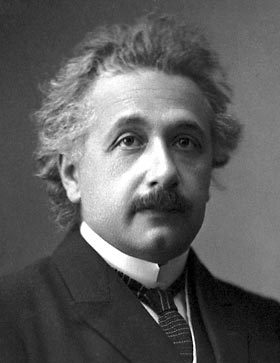
Einstein in 1921
He published his first scientific paper in 1900, and by 1905 had completed his PhD entitled “ A New Determination of Molecular Dimensions . In addition to working on his PhD, Einstein also worked feverishly on other papers. In 1905, he published four pivotal scientific works, which would revolutionise modern physics. 1905 would later be referred to as his ‘ annus mirabilis .’
Einstein’s work started to gain recognition, and he was given a post at the University of Zurich (1909) and, in 1911, was offered the post of full-professor at the Charles-Ferdinand University in Prague (which was then part of Austria-Hungary Empire). He took Austrian-Hungary citizenship to accept the job. In 1914, he returned to Germany and was appointed a director of the Kaiser Wilhelm Institute for Physics. (1914–1932)
Albert Einstein’s Scientific Contributions
Quantum Theory
Einstein suggested that light doesn’t just travel as waves but as electric currents. This photoelectric effect could force metals to release a tiny stream of particles known as ‘quanta’. From this Quantum Theory, other inventors were able to develop devices such as television and movies. He was awarded the Nobel Prize in Physics in 1921.
Special Theory of Relativity
This theory was written in a simple style with no footnotes or academic references. The core of his theory of relativity is that:
“Movement can only be detected and measured as relative movement; the change of position of one body in respect to another.”
Thus there is no fixed absolute standard of comparison for judging the motion of the earth or plants. It was revolutionary because previously people had thought time and distance are absolutes. But, Einstein proved this not to be true.
He also said that if electrons travelled at close to the speed of light, their weight would increase.
This lead to Einstein’s famous equation:
Where E = energy m = mass and c = speed of light.
General Theory of Relativity 1916
Working from a basis of special relativity. Einstein sought to express all physical laws using equations based on mathematical equations.
He devoted the last period of his life trying to formulate a final unified field theory which included a rational explanation for electromagnetism. However, he was to be frustrated in searching for this final breakthrough theory.
Solar eclipse of 1919
In 1911, Einstein predicted the sun’s gravity would bend the light of another star. He based this on his new general theory of relativity. On 29 May 1919, during a solar eclipse, British astronomer and physicist Sir Arthur Eddington was able to confirm Einstein’s prediction. The news was published in newspapers around the world, and it made Einstein internationally known as a leading physicist. It was also symbolic of international co-operation between British and German scientists after the horrors of the First World War.
In the 1920s, Einstein travelled around the world – including the UK, US, Japan, Palestine and other countries. Einstein gave lectures to packed audiences and became an internationally recognised figure for his work on physics, but also his wider observations on world affairs.
Bohr-Einstein debates
During the 1920s, other scientists started developing the work of Einstein and coming to different conclusions on Quantum Physics. In 1925 and 1926, Einstein took part in debates with Max Born about the nature of relativity and quantum physics. Although the two disagreed on physics, they shared a mutual admiration.
As a German Jew, Einstein was threatened by the rise of the Nazi party. In 1933, when the Nazi’s seized power, they confiscated Einstein’s property, and later started burning his books. Einstein, then in England, took an offer to go to Princeton University in the US. He later wrote that he never had strong opinions about race and nationality but saw himself as a citizen of the world.
“I do not believe in race as such. Race is a fraud. All modern people are the conglomeration of so many ethnic mixtures that no pure race remains.”
Once in the US, Einstein dedicated himself to a strict discipline of academic study. He would spend no time on maintaining his dress and image. He considered these things ‘inessential’ and meant less time for his research. Einstein was notoriously absent-minded. In his youth, he once left his suitcase at a friends house. His friend’s parents told Einstein’s parents: “ That young man will never amount to anything, because he can’t remember anything.”
Although a bit of a loner, and happy in his own company, he had a good sense of humour. On January 3, 1943, Einstein received a letter from a girl who was having difficulties with mathematics in her studies. Einstein consoled her when he wrote in reply to her letter
“Do not worry about your difficulties in mathematics. I can assure you that mine are still greater.”
Einstein professed belief in a God “Who reveals himself in the harmony of all being”. But, he followed no established religion. His view of God sought to establish a harmony between science and religion.
“Science without religion is lame, religion without science is blind.”
– Einstein, Science and Religion (1941)
Politics of Einstein
Einstein described himself as a Zionist Socialist. He did support the state of Israel but became concerned about the narrow nationalism of the new state. In 1952, he was offered the position as President of Israel, but he declined saying he had:
“neither the natural ability nor the experience to deal with human beings.” … “I am deeply moved by the offer from our State of Israel, and at once saddened and ashamed that I cannot accept it.”
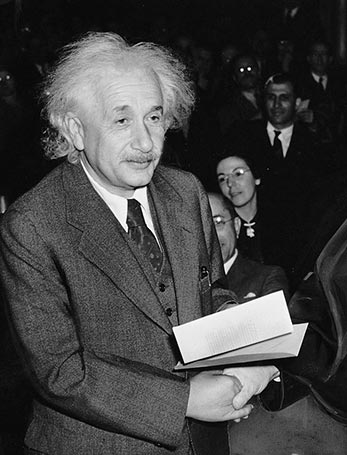
Einstein receiving US citizenship.
Albert Einstein was involved in many civil rights movements such as the American campaign to end lynching. He joined the National Association for the Advancement of Colored People (NAACP) and considered racism, America’s worst disease. But he also spoke highly of the meritocracy in American society and the value of being able to speak freely.
On the outbreak of war in 1939, Einstein wrote to President Roosevelt about the prospect of Germany developing an atomic bomb. He warned Roosevelt that the Germans were working on a bomb with a devastating potential. Roosevelt headed his advice and started the Manhattan project to develop the US atom bomb. But, after the war ended, Einstein reverted to his pacifist views. Einstein said after the war.
“Had I known that the Germans would not succeed in producing an atomic bomb, I would not have lifted a finger.” (Newsweek, 10 March 1947)
In the post-war McCarthyite era, Einstein was scrutinised closely for potential Communist links. He wrote an article in favour of socialism, “Why Socialism” (1949) He criticised Capitalism and suggested a democratic socialist alternative. He was also a strong critic of the arms race. Einstein remarked:
“I do not know how the third World War will be fought, but I can tell you what they will use in the Fourth—rocks!”
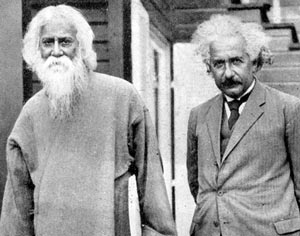
Rabindranath Tagore and Einstein
Einstein was feted as a scientist, but he was a polymath with interests in many fields. In particular, he loved music. He wrote that if he had not been a scientist, he would have been a musician. Einstein played the violin to a high standard.
“I often think in music. I live my daydreams in music. I see my life in terms of music… I get most joy in life out of music.”
Einstein died in 1955, at his request his brain and vital organs were removed for scientific study.
Citation: Pettinger, Tejvan . “ Biography of Albert Einstein ”, Oxford, www.biographyonline.net 23 Feb. 2008. Updated 2nd March 2017.
Albert Einstein – His Life and Universe
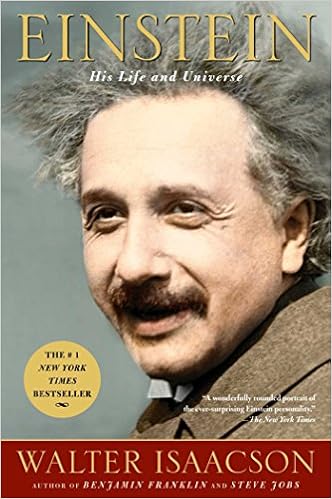
Albert Einstein – His Life at Amazon
Related pages
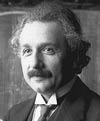
53 Interesting and unusual facts about Albert Einstein.

19 Comments
Albert E is awesome! Thanks for this website!!
- January 11, 2019 3:00 PM
Albert Einstein is the best scientist ever! He shall live forever!
- January 10, 2019 4:11 PM
very inspiring
- December 23, 2018 8:06 PM
Wow it is good
- December 08, 2018 10:14 AM
Thank u Albert for discovering all this and all the wonderful things u did!!!!
- November 15, 2018 7:03 PM
- By Madalyn Silva
Thank you so much, This biography really motivates me a lot. and I Have started to copy of Sir Albert Einstein’s habit.
- November 02, 2018 3:37 PM
- By Ankit Gupta
Sooo inspiring thanks Albert E. You helped me in my report in school I love you Albert E. 🙂 <3
- October 17, 2018 4:39 PM
- By brooklynn
By this inspired has been I !!!!!!!!!!!!!!!!!!!!!
- October 12, 2018 4:25 PM
- By Richard Clarlk
Biography of Albert Einstein, Theoretical Physicist
Lucien Aigner / Stringer / Getty Images
- People & Events
- Fads & Fashions
- Early 20th Century
- American History
- African American History
- African History
- Ancient History and Culture
- Asian History
- European History
- Latin American History
- Medieval & Renaissance History
- Military History
- Women's History
- B.A., History, University of California at Davis
Albert Einstein (March 14, 1879–April 18, 1955), a German-born theoretical physicist who lived during the 20th century, revolutionized scientific thought. Having developed the Theory of Relativity, Einstein opened the door for the development of atomic power and the creation of the atomic bomb.
Einstein is best known for his 1905 general theory of relativity, E=mc 2 , which posits that energy (E) equals mass (m) times the speed of light (c) squared. But his influence went far beyond that theory. Einstein's theories also changed thinking about how the planets revolve around the sun. For his scientific contributions, Einstein also won the 1921 Nobel Prize in physics.
Einstein also was forced to flee Nazi Germany after the rise of Adolf Hitler . It's no exaggeration to say that his theories indirectly helped lead the Allies to victory over the Axis powers in World War II, particularly the defeat of Japan.
Fast Facts: Albert Einstein
- Known For : The General Theory of Relativity, E=mc 2 , which led to the development of the atomic bomb and atomic power.
- Born : March 14, 1879 in Ulm, Kingdom of Württemberg, German Empire
- Parents : Hermann Einstein and Pauline Koch
- Died : April 18, 1955 in Princeton, New Jersey
- Education : Swiss Federal Polytechnic (1896–1900, B.A., 1900; University of Zurich, Ph.D., 1905)
- Published Works : On a Heuristic Point of View Concerning the Production and Transformation of Light, On the Electrodynamics of Moving Bodies, Does an Object’s Inertia Depend on Its Energy Content?
- Awards and Honors : Barnard Medal (1920), Nobel Prize in Physics (1921), Matteucci Medal (1921), Gold Medal of the Royal Astronomical Society (1926), Max Planck Medal (1929), Time Person of the Century (1999)
- Spouses : Mileva Marić (m. 1903–1919), Elsa Löwenthal (m. 1919–1936)
- Children : Lieserl, Hans Albert Einstein, Eduard
- Notable Quote : "Try and penetrate with our limited means the secrets of nature and you will find that, behind all the discernible concatenations, there remains something subtle, intangible and inexplicable."
Early Life and Education
Albert Einstein was born on March 14, 1879, in Ulm, Germany to Jewish parents, Hermann and Pauline Einstein. A year later, Hermann Einstein's business failed and he moved his family to Munich to start a new electric business with his brother Jakob. In Munich, Albert's sister Maja was born in 1881. Only two years apart in age, Albert adored his sister and they had a close relationship with each other their whole lives.
Although Einstein is now considered the epitome of genius, in the first two decades of his life, many people thought Einstein was the exact opposite. Right after Einstein was born, relatives were concerned with Einstein's pointy head. Then, when Einstein didn't talk until he was 3 years old, his parents worried something was wrong with him.
Einstein also failed to impress his teachers. From elementary school through college, his teachers and professors thought he was lazy, sloppy, and insubordinate. Many of his teachers thought he would never amount to anything.
When Einstein was 15 years old, his father's new business had failed and the Einstein family moved to Italy. At first, Albert remained behind in Germany to finish high school, but he was soon unhappy with that arrangement and left school to rejoin his family.
Rather than finish high school, Einstein decided to apply directly to the prestigious Polytechnic Institute in Zurich, Switzerland. Although he failed the entrance exam on the first try, he spent a year studying at a local high school and retook the entrance exam in October 1896 and passed.
Once at the Polytechnic, Einstein again did not like school. Believing that his professors only taught old science, Einstein would often skip class, preferring to stay home and read about the newest in scientific theory. When he did attend class, Einstein would often make it obvious that he found the class dull.
Some last-minute studying allowed Einstein to graduate in 1900. However, once out of school, Einstein was unable to find a job because none of his teachers liked him enough to write him a recommendation letter.
For nearly two years, Einstein worked at short-term jobs until a friend was able to help him get a job as a patent clerk at the Swiss Patent Office in Bern. Finally, with a job and some stability, Einstein was able to marry his college sweetheart, Mileva Maric, whom his parents strongly disapproved.
The couple went on to have two sons: Hans Albert (born 1904) and Eduard (born 1910).
Einstein the Patent Clerk
For seven years, Einstein worked six days a week as a patent clerk. He was responsible for examining the blueprints of other people's inventions and then determining whether they were feasible. If they were, Einstein had to ensure that no one else had already been given a patent for the same idea.
Somehow, between his very busy work and family life, Einstein not only found time to earn a doctorate from the University of Zurich (awarded 1905) but found time to think. It was while working at the patent office that Einstein made his most influential discoveries.
Influential Theories
In 1905, while working at the patent office, Einstein wrote five scientific papers, which were all published in the Annalen der Physik ( Annals of Physics , a major physics journal). Three of these were published together in September 1905.
In one paper, Einstein theorized that light must not just travel in waves but existed as particles, which explained the photoelectric effect. Einstein himself described this particular theory as "revolutionary." This was also the theory for which Einstein won the Nobel Prize in Physics in 1921.
In another paper, Einstein tackled the mystery of why pollen never settled to the bottom of a glass of water but rather, kept moving (Brownian motion). By declaring that the pollen was being moved by water molecules, Einstein solved a longstanding, scientific mystery and proved the existence of molecules.
His third paper described Einstein's "Special Theory of Relativity," in which Einstein revealed that space and time are not absolutes. The only thing that is constant, Einstein stated, is the speed of light; the rest of space and time are all based on the position of the observer.
Not only are space and time not absolutes, Einstein discovered that energy and mass, once thought completely distinct items, were actually interchangeable. In his E=mc 2 equation (E=energy, m=mass, and c=speed of light), Einstein created a simple formula to describe the relationship between energy and mass. This formula reveals that a very small amount of mass can be converted into a huge amount of energy, leading to the later invention of the atomic bomb.
Einstein was only 26 years old when these articles were published and already he had done more for science than any individual since Sir Isaac Newton.
Scientists Take Notice
In 1909, four years after his theories were first published, Einstein was finally offered a teaching position. Einstein enjoyed being a teacher at the University of Zurich. He had found traditional schooling as he grew up extremely limiting and thus he wanted to be a different kind of teacher. Arriving at school unkempt, with hair uncombed and his clothes too baggy, Einstein soon became known as much for his appearance as his teaching style.
As Einstein's fame within the scientific community grew, offers for new, better positions began to pour in. Within only a few years, Einstein worked at the University of Zurich ( Switzerland ), then the German University in Prague (Czech Republic), and then went back to Zurich for the Polytechnic Institute.
The frequent moves, the numerous conferences that Einstein attended, and preoccupation of Einstein with science left Mileva (Einstein's wife) feeling both neglected and lonely. When Einstein was offered a professorship at the University of Berlin in 1913, she didn't want to go. Einstein accepted the position anyway.
Not long after arriving in Berlin, Mileva and Albert separated. Realizing the marriage could not be salvaged, Mileva took the kids back to Zurich. They officially divorced in 1919.
Achieves Worldwide Fame
During World War I , Einstein stayed in Berlin and worked diligently on new theories. He worked like a man obsessed. With Mileva gone, he often forgot to eat and sleep.
In 1917, the stress eventually took its toll and he collapsed. Diagnosed with gallstones, Einstein was told to rest. During his recuperation, Einstein's cousin Elsa helped nurse him back to health. The two became very close and when Albert's divorce was finalized, Albert and Elsa married.
It was during this time that Einstein revealed his General Theory of Relativity, which considered the effects of acceleration and gravity on time and space. If Einstein's theory was correct, then the gravity of the sun would bend light from stars.
In 1919, Einstein's General Theory of Relativity could be tested during a solar eclipse. In May 1919, two British astronomers (Arthur Eddington and Sir Frances Dyson) were able to put together an expedition that observed the solar eclipse and documented the bent light. In November 1919, their findings were announced publicly.
After having suffered monumental bloodshed during World War I, people around the world were craving news that went beyond their country's borders. Einstein became a worldwide celebrity overnight.
It wasn't just his revolutionary theories; it was Einstein's general persona that appealed to the masses. Einstein's disheveled hair, poorly fitting clothes, doe-like eyes, and witty charm endeared him to the average person. He was a genius, but he was an approachable one.
Instantly famous, Einstein was hounded by reporters and photographers wherever he went. He was given honorary degrees and asked to visit countries around the world. Albert and Elsa took trips to the United States, Japan, Palestine (now Israel), South America, and throughout Europe.
Becomes an Enemy of the State
Although Einstein spent the 1920s traveling and making special appearances, these took away from the time he could work on his scientific theories. By the early 1930s, finding time for science wasn't his only problem.
The political climate in Germany was changing drastically. When Adolf Hitler took power in 1933, Einstein was luckily visiting the United States (he never returned to Germany). The Nazis promptly declared Einstein an enemy of the state, ransacked his house, and burned his books.
As death threats began, Einstein finalized his plans to take a position at the Institute for Advanced Study at Princeton, New Jersey. He arrived at Princeton on Oct. 17, 1933.
Einstein suffered a personal loss when Elsa died on Dec. 20, 1936. Three years later, Einstein's sister Maja fled from Mussolini's Italy and came to live with Einstein in Princeton. She stayed until her death in 1951.
Until the Nazis took power in Germany, Einstein had been a devoted pacifist for his entire life. However, with the harrowing tales coming out of Nazi-occupied Europe, Einstein reevaluated his pacifist ideals. In the case of the Nazis, Einstein realized they needed to be stopped, even if that meant using military might to do so.
The Atomic Bomb
In July 1939, scientists Leo Szilard and Eugene Wigner visited Einstein to discuss the possibility that Germany was working on building an atomic bomb.
The ramifications of Germany building such a destructive weapon prompted Einstein to write a letter to President Franklin D. Roosevelt to warn him about this potentially massive weapon. In response, Roosevelt established the Manhattan Project , a collection of U.S. scientists urged to beat Germany to the construction of a working atomic bomb.
Even though Einstein's letter prompted the Manhattan Project, Einstein himself never worked on constructing the atomic bomb.
Later Years and Death
From 1922 until the end of his life, Einstein worked on finding a "unified field theory." Believing that "God does not play dice," Einstein searched for a single, unified theory that could combine all the fundamental forces of physics between elementary particles. Einstein never found it.
In the years after World War II , Einstein advocated for a world government and for civil rights. In 1952, after the death of Israel's first President Chaim Weizmann , Einstein was offered the presidency of Israel. Realizing that he was not good at politics and too aged to start something new, Einstein declined the offer.
On April 12, 1955, Einstein collapsed at his home. Just six days later, on April 18, 1955, Einstein died when the aneurysm he had been living with for several years finally burst. He was 76 years old.
Resources and Further Reading
- “ The Year Of Albert Einstein. ” Smithsonian.com , Smithsonian Institution, 1 June 2005.
- “ Albert Einstein. ” Biography.com , A&E Networks Television, 14 Feb. 2019.
- Kuepper, Hans-Josef. “ The Collected Papers of Albert Einstein. ” Albert Einstein - Honours, Prizes and Awards.
- Albert Einstein Printables
- The Life and Work of Albert Einstein
- Ancestry of Albert Einstein
- Biography: Albert Einstein
- 10 Things You Don't Know About Albert Einstein
- Einstein's Theory of Relativity
- Most Influential Scientists of the 20th Century
- Max Planck Formulates Quantum Theory
- Edward Teller and the Hydrogen Bomb
- 14 Notable European Scientists Throughout History
- Introduction to the Major Laws of Physics
- James Clerk Maxwell, Master of Electromagnetism
- Georges-Henri Lemaitre and the Birth of the Universe
- Biography of J. Robert Oppenheimer, Director of the Manhattan Project
- Biographical Profile of Niels Bohr
- RADAR and Doppler RADAR: Invention and History

Albert Einstein: facts about his life, death, education and work
In 1919, theoretical physicist Albert Einstein published his pioneering theory of general relativity. His work established new ideas about the formation of the universe and black holes, revolutionising our knowledge of gravity, time and space. When and where was he born? When and how did he die? Read more about his life, plus 5 little-known facts from author Andrew Robinson…

- Share on facebook
- Share on twitter
- Share on whatsapp
- Email to a friend
Born in Germany on 14 March 1879, Albert Einstein became well established in the scientific community for his general theories of relativity, which redefined understandings of space, time, matter, energy, and gravity. In 1921, Einstein won the Nobel Prize for Physics for his explanation of the photoelectric effect – and he is today considered one of the most respected figures in the history of science. Read on for the story of his life or jump to 5 little-known facts …
Albert Einstein's early life
Albert Einstein was the eldest child of Hermann Einstein, an electrical engineer and salesman, and Pauline Koch. He had one sister, named Maja. Just six weeks after Albert Einstein was born in Ulm, his family moved to Munich. From a young age Einstein showed a keen interest in music, and he learned how to play the piano and violin. In 1887 Einstein began his education at the Luitpold Gymnasium (a secondary school) in Munich.

In 1896, aged 17, Einstein enrolled at Zürich Polytechnic, where he studied for a mathematics and physics teaching diploma. Four years later he completed his diploma but was unable to find a teaching job, so he began work at the Swiss Patent Office as a technical assistant in 1901.
Einstein met Mileva Marić while they both were studying at Zürich Polytechnic. The couple married in 1903 and together they had two sons. It has been suggested the couple may have had a daughter before they married, but the child may have died or been adopted. The couple ultimately separated in 1914 before divorcing in 1919. Einstein married his second wife, Elsa Löwenthal, in 1919.
Albert Einstein's research
In 1900, after completing his diploma at Zürich Polytechnic, Einstein began researching for a doctorial thesis. In 1905 he completed a doctorate degree from the University of Zurich. In the same year, four of his research papers were published, including one on the special theory of relativity, which revealed new findings on the relationship between time and space.
More like this

After demonstrating his impressive work in theoretical physics, Einstein was made a privatdozent [an academic title conferred by some European universities, especially in German-speaking countries] in Bern, Switzerland in 1908.
Einstein became professor extraordinary [a lower-ranking professorship] at University of Zurich in 1909, before being made professor of theoretical physics at Charles University in Prague in 1911. Einstein’s academic career developed further in 1914 when he became the director of the Kaiser Wilhelm Institute of Physics and a professor at the University of Berlin.
In 1915 Einstein published his work on the general theory of relativity, which suggests that “space and time are woven together, and become distorted by objects with mass”. This theory is considered by many to be the most significant scientific concept developed in modern-day physics. As a result of his outstanding work, in 1921 Einstein was awarded the Nobel Prize in Physics for services to theoretical physics.
What was Einstein's Theory of Relativity?
Einstein during the second world war.
With the rise of Nazism in Germany in the early 1930s, the Nazi party began to restrict the number of Jews who could hold academic positions in universities across Germany. Einstein, who was from a Jewish family, feared facing persecution. In 1933 he renounced his German citizenship and emigrated to the US, where he became a professor at Princeton University in New Jersey.

Following the outbreak of the Second World War in 1939, Einstein wrote a letter to President Franklin D Roosevelt to express his fears that the Nazis were developing nuclear weapons. He warned the president that the US needed to begin its own research into atomic bombs in order to protect the country from the Nazi threat. This letter influenced the establishment of the Manhattan Project , led by physicist J Robert Oppenheimer – the research scheme that initiated the development of the first nuclear weapons. However, Einstein himself refused involvement in the Manhattan Project, as he was a pacifist.

After the US dropped the atomic bomb on Hiroshima and Nagasaki in 1945, Einstein became active in the political movement to prevent the use of atomic bombs in the future.
In the 1940s Einstein also became involved in campaigns advocating civil rights in the US, and he joined National Association for the Advancement of Colored People (NAACP). In 1946 he made an impassioned speech at Lincoln University in Pennsylvania in which he stated that racism is "a disease of white people".
In the later years of his life, Einstein continued to work as a theoretical physicist, and he further developed his theory of general relativity.
When did Albert Einstein die?
On 17 April 1955, Einstein experienced an abdominal aortic aneurysm and internal bleeding, but refused to undergo surgery [it has been suggested he may have wished to decide when he could die]. He died the next day at Princeton Hospital in New Jersey, aged 76.
Just hours after his death, Einstein’s brain was removed without the permission of his family, and it was taken to the University of Pennsylvania. It was dissected, cut into 240 pieces, and samples were put onto slides, ready to be examined under a microscope. Einstein’s son Hans Albert eventually agreed for his father’s brain to be used for scientific investigation.
- Read more | What happened to Albert Einstein's brain?
Over the past six decades, numerous studies have been published on Einstein’s brain, and some scientists have even suggested that the unusual features of his brain [such as having an extra ridge on his mid-frontal lobe ] may be linked to his high level of intelligence.
In 1999, TIME Magazine named Einstein as the ‘Person of the Century’.
5 little-known facts about Albert Einstein
Andrew Robinson reveals five surprising facts about the famous physicist, from his theory of relativity to his views on pacifism and nuclear weapons…
Albert Einstein’s theory of relativity was rejected in Britain until 1919
Albert Einstein’s theory of relativity made him instantly famous when it was confirmed by British astronomers, led by scientist Arthur Eddington, during a solar eclipse in 1919. But when the unknown Einstein first published it in 1905, the theory convinced hardly a single British thinker – either in the sciences or the humanities. University of Cambridge scientists either ignored, reinterpreted or rejected relativity, for lack of experimental evidence, until it was accepted and taught to undergraduates by Eddington in 1920. University of Oxford philosophers were even more scathing, ridiculing the theory as late as 1919 because it appeared to contradict their training in the Greek classics such as Euclid.

Albert Einstein abandoned pacifism as soon as the Nazis came to power
Einstein’s militant pacifism in response to the First World War is well known. Less known is his change of mind in 1933, a few months after Adolf Hitler came to power in Germany, in favour of European military rearmament against the Nazi threat—long before most European and American politicians. In 1939, he even recommended to US President Franklin Roosevelt the building of an atomic bomb, thereby helping to launch the Manhattan Project in 1941–2. But after the Second World War, Einstein changed his mind yet again and fought very publicly against nuclear weapons. His last public act, days before his death in 1955, was to sign the anti-nuclear Russell-Einstein Manifesto, initiated by British philosopher Bertrand Russell.

Albert Einstein turned down the presidency of Israel
In 1952, Einstein was offered the presidency of Israel, following the death of his long-time sparring partner, Chaim Weizmann. He turned it down, while simultaneously observing that his relationship with the Jewish people had become his “strongest human bond”. This decision was the culmination of three decades of ambivalence towards Zionism. Jewish by birth, and also by sympathy, Einstein always suspected that Zionism would encourage the use of violence. Although he raised money for the Zionist cause in the 1920s, and supported the foundation of the Hebrew University of Jerusalem—to which he willed all of his papers after his death—Einstein remained too much of an individualist to commit himself to any nation.
Albert Einstein never returned to Europe after 1933
From the 1920s, Einstein was celebrated as a citizen of the world, partly as a result of his global lectures in Europe, Japan, Palestine, South America and the United States. But after he left Europe in 1933, and settled in Princeton, New Jersey, he never returned to his homeland. Indeed, he never left America before his death in 1955 – despite countless invitations to travel. Part of this reluctance was his undying distrust of his native Germany following the horrors of the Nazi period. In addition, Einstein had no wish to entangle himself in the politics of Palestine. But most of all, he loved solitude in Princeton for the sake of his all-important physics.
- Read more about Einstein's visits to Britain
Albert Einstein is probably the most quoted figure of our time
Einstein is one of the most widely quoted people of all time, and probably the most quoted figure from the 20th century. The website Wikiquote has many more entries for Einstein than for Aristotle, Galileo Galilei, Isaac Newton , Charles Darwin or Stephen Hawking, and even than Einstein’s opinionated contemporaries Winston Churchill and George Bernard Shaw – including an ever-expanding section of misquotations and invented ‘quotations’. Beyond science, Einstein was an avid commentator on education, marriage, money, the nature of genius, music-making, politics and more. As he seriously joked to a friend in 1930: “To punish me for my contempt of authority, Fate has made me an authority myself.”
Andrew Robinson is the author of 25 books in the arts and sciences, including Einstein on the Run: How Britain Saved the World's Greatest Scientist ( Yale University Press, 2019)
This HistoryExtra article was updated in July 2023

JUMP into SPRING! Get your first 6 issues for £9.99
+ FREE HistoryExtra membership (special offers) - worth £34.99!
Sign up for the weekly HistoryExtra newsletter
Sign up to receive our newsletter!
By entering your details, you are agreeing to our terms and conditions and privacy policy . You can unsubscribe at any time.

JUMP into SPRING! Get your first 6 issues for

USA Subscription offer!
Save 76% on the shop price when you subscribe today - Get 13 issues for just $45 + FREE access to HistoryExtra.com

HistoryExtra podcast
Listen to the latest episodes now
Understanding the Code of Conduct in Medieval Times
- Discovering the Richness of Japanese Culture
- A Brief History of Major Battles in World War I
- Discover the Richness of Chinese Culture
- Knights and Chivalry
- Code of Conduct
- Armor and Weapons
- Medieval Life
- Health and Medicine
- Holidays and Celebrations
- Serfs and Peasants
- Kings and Lords
- City-States
- Gods and Goddesses
- Julius Caesar
- Industrial Revolution
- Impact on Society
- World War II
- Allied Powers
- Atomic Bomb
- World War I
- Treaty of Versailles
- Major Battles
- Leaders and Rulers
- Alexander the Great
- Queen Elizabeth I
- Napoleon Bonaparte
- Activists and Reformers
- Nelson Mandela
- Susan B. Anthony
- Mahatma Gandhi
- Scientists and Inventors
- Thomas Edison
Marie Curie
- Fall of the Berlin Wall
- Cuban Missile Crisis
- Civil Rights Movement
Martin Luther King Jr.
- Segregation
- Climate Change
- Renewable Energy
- Greenhouse Effect
- Impact on Environment
- African Cultures
- Egyptian Culture
- Nigerian Culture
- Asian Cultures
- Japanese Culture
- Indian Culture
- Chinese Culture
- Latin American Cultures
- Aztec Civilization
- Mayan Civilization
- Inca Civilization
- Natural Disasters
- Tsunami in Japan
- Hurricane Katrina
- Pompeii Eruption
- Important Events
- Signing of the Declaration of Independence
- Discovery of Penicillin
- Moon Landing
- Cultural Achievements
- Renaissance Art
- Ancient Chinese Inventions
- Assessment Tools
- Projects and Presentations
- Writing Assignments
- Quizzes and Tests
- Teaching Methods
- Interactive Learning
- Primary Sources
- Role-playing
- Educational Resources
- Online Databases
- Educational Games
- Museums and Exhibits
- Photographs and Artifacts
- Government Documents
- Diaries and Letters
- Online Sources
- Websites and Blogs
- Digital Archives
- Books and Literature
- Historical Fiction
- Biographies
- A Brief Overview of Albert Einstein's Life and Contributions
- Historical Figures
Albert Einstein is a name that needs no introduction. Known as one of the greatest scientists and thinkers of all time, Einstein's contributions have shaped the way we understand the world today. From his groundbreaking theories to his humanitarian efforts, Einstein's legacy continues to inspire and influence generations. In this article, we will take a closer look at the life and achievements of this remarkable historical figure, and gain a deeper understanding of his impact on science and society. Albert Einstein is a name that is known worldwide.
He was not only a brilliant scientist, but also a cultural icon whose contributions have shaped our understanding of the universe. In this article, we will take a closer look at his life, his achievements, and his lasting impact on the world. First, let's delve into Einstein's early life and education. Born in Ulm, Germany in 1879, he showed an early interest in mathematics and physics. His parents, who were both Jewish, encouraged his curiosity and provided him with a supportive environment to explore his interests. Einstein's education was unconventional, as he struggled with the strict discipline of traditional schools.
However, he excelled in subjects like mathematics and physics, and eventually went on to study at the Swiss Federal Institute of Technology. It was during this time that he developed his groundbreaking theories of relativity and quantum mechanics. Einstein's theories revolutionized the field of physics and challenged traditional beliefs about space and time. His theory of general relativity, published in 1915, explained the force of gravity in terms of the curvature of space-time. This theory has been confirmed through various experiments and has had a significant impact on our understanding of the universe. In addition to his work in physics, Einstein also made contributions in other areas such as political activism and philosophy.
He was a vocal advocate for peace and social justice, using his platform as a respected scientist to speak out against war and discrimination. However, Einstein's influence extended beyond just his scientific and political endeavors. His role in the development of nuclear weapons during World War II has sparked ethical debates that continue to this day. He also had a significant impact on popular culture, with his iconic image and famous equation E=mc² becoming synonymous with genius. Today, Einstein's legacy lives on through his contributions to science and society. For those interested in learning more about this remarkable historical figure, there are many educational resources available.
However, his parents' marriage began to deteriorate and they eventually separated. As a result, Einstein's mother moved to Switzerland with him and his younger sister, Maja. It was in Switzerland where Einstein received most of his formal education. Einstein attended the Swiss Federal Polytechnic School in Zurich, where he studied physics and mathematics. He graduated in 1900 with a teaching diploma in physics and mathematics.
After graduation, he struggled to find a job as a teacher and eventually took on various odd jobs while continuing his scientific research. In conclusion, Albert Einstein's impact on world history cannot be overstated. His work in science and philosophy has shaped our understanding of the universe and has influenced countless individuals across generations. Through this article, we hope to have provided a glimpse into the life and legacy of this extraordinary scientist.
New Articles
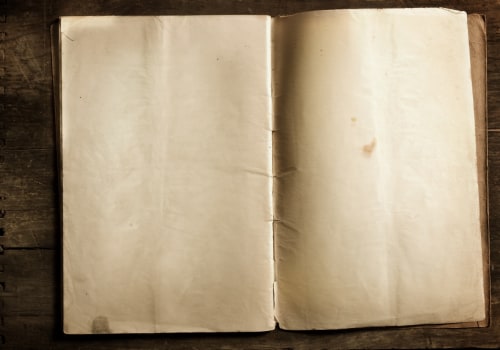
- Diaries and Letters: Exploring Primary Sources of World History
An in-depth look at diaries and letters as primary sources for understanding world history and cultures. Learn about famous figures, important events, and educational resources to deepen your knowledge.
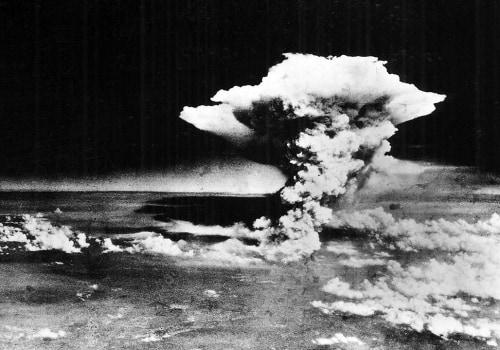
- Understanding the Impact of the Atomic Bomb
Exploring the History and Consequences of the Atomic Bomb in the Context of World War II
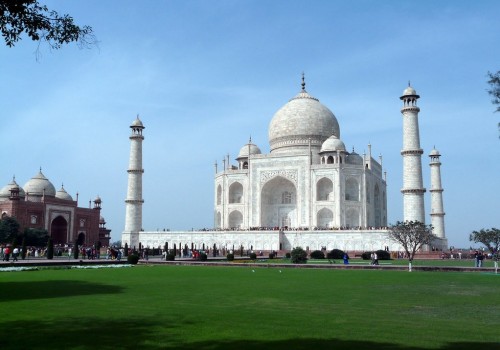
- Understanding Indian Culture: A Journey Through Time
Explore the Diversity and Significance of Indian Culture Through the Ages

- Exploring the World of Manors
Understanding Feudalism and Medieval Times through Manors
Top Articles
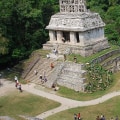
- Exploring the Fascinating Mayan Civilization: A Journey Through Time

- Podcasts for Exploring World History
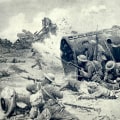
- Understanding the Causes of World War I
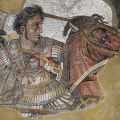
- Alexander the Great: The Legendary Leader Who Conquered the World
- Understanding the Allied Powers in World War II
- The Discovery of Penicillin: Uncovering the Life-Saving Antibiotic
- Exploring Nigerian Culture
- Marie Curie: A Pioneer in Science and History
- The Fall of the Berlin Wall: A Defining Moment in World History
- Inventions Throughout History: A Journey Through the Modern Era and Industrial Revolution
- Discover the Impact of Susan B. Anthony on World History
- Discovering the Genius of Thomas Edison
- The Devastating Pompeii Eruption: A Comprehensive Look into One of the World's Most Notorious Natural Disasters
- Uncovering the Mysteries of Mummies
- Exploring Ancient Chinese Inventions
- The Marvelous Pyramids of Ancient Egypt: An Introduction to One of the World's Greatest Wonders
- Museums and Exhibits: Unlocking the Secrets of World History
- Exploring the World Through Educational Games
- The Impact and Significance of the Treaty of Versailles in World History
- The Devastation of Hurricane Katrina: A Look Back at One of the Deadliest Natural Disasters in World History
- Textbooks: A Comprehensive Resource for Understanding World History
A Journey to the Moon: Exploring the History of the Moon Landing
- The Fascinating World of the Inca Civilization: A Journey Through Latin American Cultures
- Exploring Primary Sources in World History
- Discovering Egyptian Culture
- Exploring the Life and Reign of Queen Elizabeth I
- Discovering Daily Life in Medieval Times
- Health and Medicine in Medieval Times: Exploring the Connection between Body and Mind
- Understanding Historical Fiction: A Comprehensive Overview
- The Power of Role-Playing: Exploring World History Through Immersive Education
- An Overview of Mythology in Ancient Greece
- Exploring the Rich History of the Aztec Civilization
- A Journey Through History: Exploring Digital Archives
- Understanding Tsunami in Japan
- Exploring the Fascinating World of Armor and Weapons
- A Fascinating Look into the World of Pharaohs
- Understanding the Greenhouse Effect: An Overview of Global Climate Change
- Nelson Mandela: A Leader in the Fight for Equality
- A Brief History of Kings and Lords: Exploring Medieval Times and Feudalism
- Understanding the Crusades: A Journey Through Medieval Times
- Exploring Projects and Presentations in World History
- Understanding Segregation: A Comprehensive Look at Global Events and the Civil Rights Movement
- Exploring World History Through Interactive Learning
- Understanding Quizzes and Tests in World History
- Napoleon Bonaparte: The Rise and Fall of a Revolutionary Leader
- Julius Caesar: The Life and Legacy of a Roman Emperor
- Websites and Blogs: A Comprehensive Overview of World History Resources
- The Impact on the Environment: Understanding the Effects of Climate Change
- Exploring the World of Gods and Goddesses
- A Brief History of Factories in the Modern Era
- Impact on Society During the Industrial Revolution
- The Signing of the Declaration of Independence: A Pivotal Moment in World History
- The Cold War's Impact on the Space Race: A Comprehensive Overview
- The Power of Online Databases: Unlocking the Secrets of World History
- Exploring the World of Renewable Energy
- Photographs and Artifacts: Exploring the Past Through Primary Sources
- Rosa Parks: The Mother of the Civil Rights Movement
- The Life and Legacy of Mahatma Gandhi
- A Brief Overview of the Fascinating Inca Civilization
- A Journey Through the City-States of Ancient Greece
- The Fascinating World of Renaissance Art
- Exploring World History Through Government Documents
- The Fascinating World of Biographies: A Comprehensive Look into Historical Figures and Events
- Understanding Serfs and Peasants in Medieval Times
- Holidays and Celebrations: Exploring World History Through Medieval Times
- The Rise and Fall of Gladiators in Ancient Rome
- Martin Luther King Jr.: A Champion for Civil Rights
Exploring the Rise and Fall of the Empire: A Journey Through Ancient Rome
- Writing Assignments: A Comprehensive Guide to World History Education
- The Cuban Missile Crisis: A Defining Moment in World History
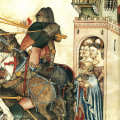
Which cookies do you want to accept?
Culture History
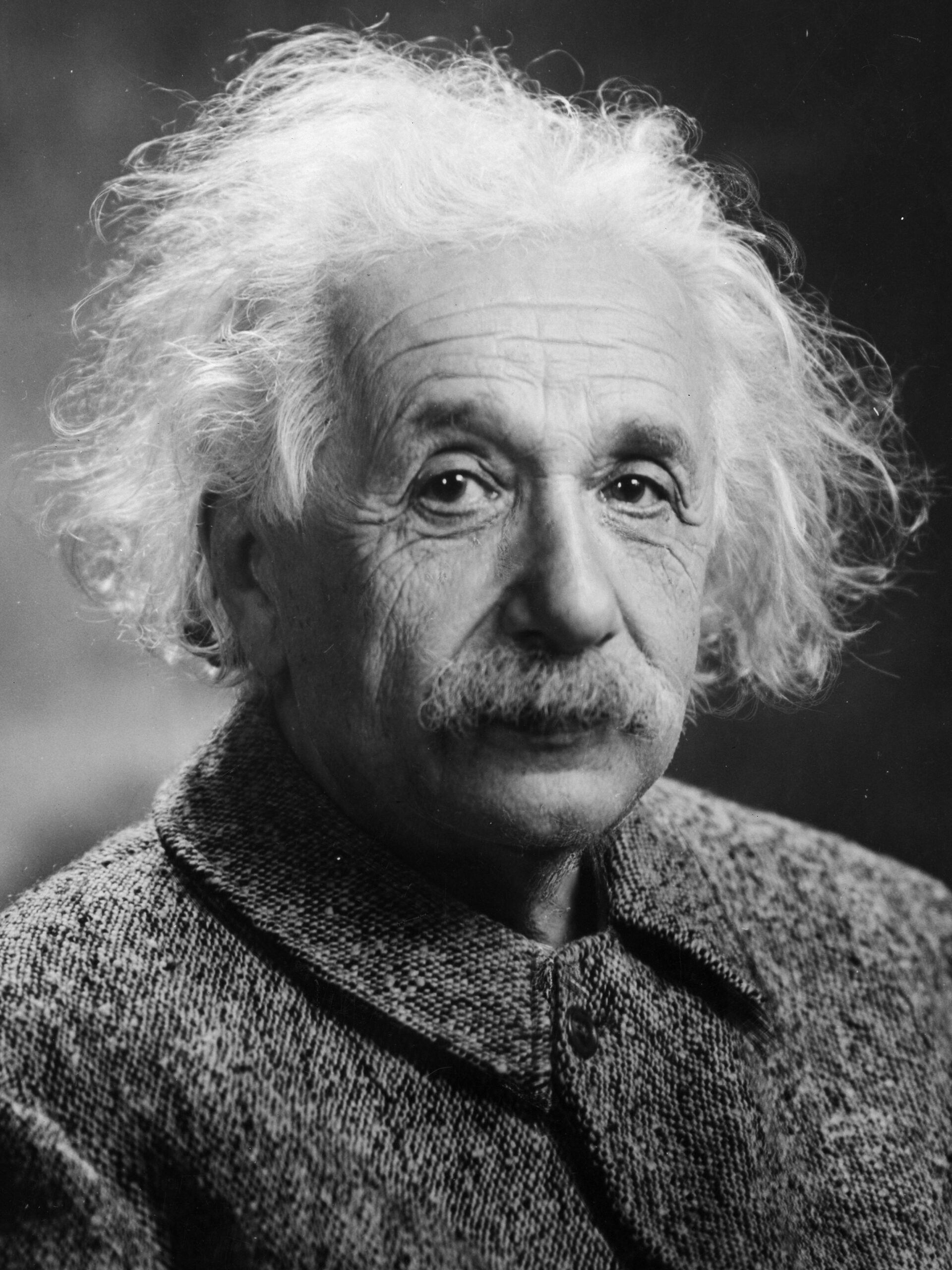
Albert Einstein (1879-1955) was a renowned theoretical physicist, best known for developing the theory of relativity, which revolutionized our understanding of space, time, and gravity. He was awarded the Nobel Prize in Physics in 1921 for his explanation of the photoelectric effect. Einstein’s work laid the foundation for many advancements in modern physics.
Albert Einstein’s early life and education laid the foundation for a revolutionary career in physics. Born on March 14, 1879, in the city of Ulm in the Kingdom of Württemberg, which was part of the German Empire, Einstein was the first child of Hermann and Pauline Einstein. His father, a salesman and engineer, and his mother, a homemaker, provided a modest yet supportive environment for their son’s intellectual development.
Einstein’s early years were marked by curiosity and a fascination with the mysteries of the natural world. He showed an early interest in mathematics and began to explore the subject on his own. The family’s move to Munich in 1880 coincided with the start of Einstein’s formal education. At the age of six, he entered the Luitpold Gymnasium, a Catholic elementary school, where his unconventional behavior and independent thinking sometimes clashed with the traditional educational methods.
Einstein’s teachers noted his exceptional mathematical abilities, but his rebellious spirit and refusal to conform to authority created a challenging academic environment. Frustrated by the rigid structure of the school, Einstein often clashed with his teachers, earning a reputation as a nonconformist. His dissatisfaction with the educational system ultimately led his parents to consider removing him from the Gymnasium.
In 1889, Einstein’s family faced a significant change with the relocation to Italy due to financial challenges. While his parents and sister settled in Pavia, Albert remained in Munich to complete his education. At the age of 15, Einstein applied to the Swiss Federal Institute of Technology (ETH) in Zurich, seeking admission to the prestigious institution. Despite excelling in mathematics and physics, he failed the entrance exam, and his application was rejected.
Undeterred, Einstein enrolled in the Swiss Cantonal School in Aarau, Switzerland, to complete his secondary education. Under the guidance of Jost Winteler, a supportive and understanding teacher, Einstein thrived in this new environment. He immersed himself in his studies, delving into advanced topics in mathematics and physics. It was during this period that Einstein developed a deep appreciation for the works of classical physicists, including Isaac Newton and James Clerk Maxwell .
In 1896, Einstein graduated from the Swiss Cantonal School with excellent grades, earning his diploma. His success paved the way for his acceptance into the ETH Zurich, where he pursued his passion for physics. Einstein’s time at the ETH marked a crucial phase in his intellectual development. He studied under renowned physicists such as Heinrich Friedrich Weber and Hermann Minkowski, delving into the latest advancements in theoretical physics.
While at the ETH, Einstein faced financial challenges, often struggling to make ends meet. He earned money by tutoring classmates and discovered a passion for teaching. Despite the financial hardships, his dedication to his studies remained unwavering. In 1900, Einstein graduated from the ETH with a teaching diploma in physics and mathematics.
After completing his formal education, Einstein faced the challenge of entering the professional world. His initial attempts to secure a university position were unsuccessful, leading him to accept a position as a technical assistant at the Swiss Patent Office in Bern in 1902. The patent office provided a stable income for Einstein, allowing him to marry Mileva Maric, a fellow student from the ETH, in 1903. The couple had two sons, Hans Albert and Eduard.
While working at the patent office, Einstein continued to explore his scientific interests during his free time. He published several scientific papers, including his groundbreaking work on the photoelectric effect in 1905, which laid the foundation for the concept of photons and earned him a Ph.D. from the University of Zurich. This period, often referred to as Einstein’s “miracle year,” saw the publication of four influential papers that had a profound impact on various branches of physics.
Einstein’s success in 1905 marked a turning point in his career. Recognizing his contributions, the scientific community began to take notice of the young physicist. In 1908, he was appointed as a lecturer at the University of Bern. This marked the beginning of his transition from the patent office to an academic career.
As Einstein’s reputation grew, so did his opportunities. In 1911, he accepted a position as a professor at the German University in Prague. His time in Prague was productive, leading to further advancements in his theoretical work. However, in 1912, he returned to Switzerland, accepting a position at the ETH Zurich, where he had once been a student.
Einstein’s journey from a rebellious schoolboy in Munich to a renowned physicist at the ETH Zurich showcased not only his intellectual prowess but also his resilience in the face of challenges. His early life and education set the stage for the remarkable scientific contributions that would follow, forever changing our understanding of the universe.
Albert Einstein’s Special Theory of Relativity, published in 1905, stands as one of the most revolutionary achievements in the history of physics . Building on the foundation laid by Isaac Newton’s classical mechanics, Einstein’s theory introduced profound changes to our understanding of space, time, and the nature of the universe.
At the heart of the Special Theory of Relativity is the principle of relativity itself. Einstein proposed that the laws of physics are the same for all observers in uniform motion, regardless of their relative velocities. This concept challenged the classical notion of absolute space and time, as described by Newtonian physics. Instead, Einstein proposed a new framework in which the laws of physics are consistent for all observers, regardless of their state of motion.
One of the most iconic consequences of the theory is the equivalence of mass and energy, expressed by the famous equation E=mc². This equation states that energy (E) is proportional to mass (m) and is equivalent to the speed of light (c) squared. The realization that mass could be converted into energy and vice versa had profound implications for our understanding of the physical world. It laid the groundwork for advancements in nuclear physics and played a crucial role in the development of nuclear energy.
The theory also introduced a novel perspective on space and time, merging them into a single entity known as spacetime. According to Special Relativity, space and time are interconnected, and the fabric of spacetime can be curved by the presence of mass and energy. This concept set the stage for Einstein’s later development of the General Theory of Relativity, which extended the principles of Special Relativity to include gravity.
One of the key postulates of Special Relativity is the constancy of the speed of light in a vacuum. Einstein proposed that the speed of light is the same for all observers, regardless of their relative motion. This departure from classical physics was experimentally confirmed by the famous Michelson-Morley experiment, which aimed to detect variations in the speed of light due to the Earth’s motion through space. The experiment’s results supported Einstein’s theory and led to a fundamental shift in our understanding of the nature of light and motion.
Special Relativity also introduced the concept of time dilation, a phenomenon in which time appears to pass more slowly for an observer in motion relative to a stationary observer. This effect becomes significant at speeds approaching the speed of light and has been experimentally verified through measurements of particles moving at high velocities.
Einstein’s Special Theory of Relativity not only reshaped the foundations of physics but also had broader implications for philosophy and our conception of reality. It challenged classical notions of absolute space and time, paving the way for a more nuanced understanding of the dynamic relationship between matter, energy, space, and time.
The profound impact of Special Relativity continues to be felt today. Its principles are integrated into the framework of modern physics, influencing a wide range of scientific disciplines, from particle physics to cosmology. Einstein’s ability to question fundamental assumptions and propose groundbreaking ideas in 1905 has left an enduring legacy, shaping the trajectory of scientific inquiry and expanding our comprehension of the universe.
Nobel Prize in Physics (1921)
Albert Einstein was awarded the Nobel Prize in Physics in 1921, marking a significant recognition of his groundbreaking contributions to theoretical physics. However, the circumstances surrounding the prize and its specific focus highlight the complex relationship between Einstein and the scientific establishment of the time.
The Nobel Prize in Physics for 1921 was awarded to Albert Einstein “for his services to Theoretical Physics, and especially for his discovery of the law of the photoelectric effect.” The photoelectric effect, a phenomenon where light falling on a material surface ejects electrons from it, had been a subject of scientific inquiry for many years. Einstein’s work on the photoelectric effect, published in 1905, provided a theoretical framework that not only explained the experimental observations but also laid the foundation for the concept of photons—particles of light.
Einstein’s explanation of the photoelectric effect departed from classical wave theory, proposing that light is quantized and composed of discrete packets of energy, or quanta. Each quantum of light (later termed a photon) carries energy proportional to its frequency. This groundbreaking idea, combined with his equation E=hf (where E is energy, h is Planck’s constant, and f is frequency), revolutionized the understanding of light and paved the way for the development of quantum theory.
The choice of the photoelectric effect for the Nobel Prize was not without controversy. At the time, Einstein’s theories were still gaining acceptance within the scientific community. Some physicists, notably Max Planck , had embraced the quantum nature of light, but others were hesitant to fully embrace these revolutionary ideas. The Nobel Committee’s decision to recognize Einstein’s work on the photoelectric effect rather than his more famous theories of special and general relativity reflected a certain caution within the scientific establishment.
Einstein himself had reservations about the Nobel Committee’s choice. In his acceptance speech, he acknowledged the award but expressed his hope that future Nobel Prizes would be awarded for achievements in relativity theory. The decision to focus on the photoelectric effect instead of relativity may have been influenced by a desire to avoid controversies surrounding the acceptance of the more radical aspects of Einstein’s work at that time.
The recognition of the photoelectric effect in 1921 marked a turning point in Einstein’s relationship with the scientific community. While he had faced skepticism and resistance to his ideas, the Nobel Prize provided a measure of validation for his contributions to theoretical physics. It also brought him greater visibility on the international stage.
The impact of Einstein’s work on the photoelectric effect extended far beyond the Nobel Prize. The development of quantum theory, influenced by his ideas, became a cornerstone of modern physics. The photoelectric effect played a crucial role in the experimental verification of quantum principles, providing empirical support for the concept of quantized energy levels.
Emigration to the United States
Albert Einstein’s emigration to the United States in 1933 marked a significant chapter in his life, shaped by a combination of personal and political factors. Fleeing the rising Nazi regime in Germany, Einstein sought refuge in America, where he would continue his scientific work, contribute to academia, and become an influential public figure.
As Adolf Hitler and the National Socialist Party gained power in Germany, Einstein, who was of Jewish heritage and known for his outspoken views, became a target of increasing persecution. The Nazi regime’s anti-Semitic policies and restrictions on intellectuals compelled Einstein to reassess his situation. His opposition to authoritarianism, coupled with concerns for his safety, prompted him to make the difficult decision to leave his homeland.
In March 1933, Einstein and his wife, Elsa, left Germany for Belgium, where they briefly resided before continuing to the United States. At the time, Einstein was a professor at the Kaiser Wilhelm Institute for Physics in Berlin. The decision to abandon his position and the academic environment he had contributed to for many years underscored the urgency and gravity of the situation.
Einstein’s emigration to the United States was facilitated by the Institute for Advanced Study (IAS) in Princeton, New Jersey. In 1932, he had accepted an offer to join the IAS as a resident professor, which provided him with an academic home and a haven from the political turmoil in Europe. The IAS, founded by philanthropists Louis Bamberger and Caroline Bamberger Fuld, became a refuge for scholars fleeing persecution.
Upon arriving in the United States, Einstein settled into his new role at the IAS and began an era of scientific productivity. He continued his theoretical work, collaborating with other prominent physicists at the institute. Princeton offered him not only a sanctuary from political unrest but also a vibrant intellectual community that fueled his scientific endeavors.
Einstein’s presence in the United States also had a profound impact on the American scientific landscape. He became a sought-after figure in both academic and public circles, lending his support to various causes. His emigration coincided with the increasing awareness of the threat posed by fascist ideologies, and Einstein’s advocacy for democracy, pacifism, and civil rights resonated with many.
In addition to his scientific pursuits, Einstein embraced a more public role in American society. He became involved in political and social issues, speaking out against racism and discrimination. Einstein’s commitment to civil rights was reflected in his association with the NAACP (National Association for the Advancement of Colored People), where he collaborated with activists such as W.E.B. Du Bois. His support for Zionism and the establishment of a Jewish homeland in Palestine also became part of his public discourse.
Einstein’s emigration to the United States not only allowed him to escape the immediate dangers of Nazi persecution but also provided him with a platform to influence the course of history. His contributions extended beyond the realm of theoretical physics to encompass broader issues of social justice, human rights, and global peace.
The United States, in turn, benefited greatly from Einstein’s presence. His work at the IAS and his engagement with American society left an indelible mark, contributing to the country’s scientific and cultural landscape. Einstein’s emigration underscored the complex interplay between personal circumstances, political upheaval, and the enduring impact of a brilliant mind on the world stage.
World War II and Manhattan Project
World War II and the Manhattan Project represent a crucial period in the life of Albert Einstein and his indirect involvement in the development of nuclear weapons. While Einstein did not directly participate in the Manhattan Project, his contributions to the field of theoretical physics laid the groundwork for the scientific understanding that made the project possible.
As World War II unfolded, the scientific community became increasingly aware of the potential for harnessing atomic energy for destructive purposes. In 1939, physicists Leo Szilard and Eugene Wigner, both refugees from Europe, approached Einstein with concerns about the possibility of Nazi Germany developing atomic weapons. Recognizing the grave implications, they urged Einstein to write a letter to President Franklin D. Roosevelt, urging the United States to initiate its own atomic research.
Einstein, along with physicist Leó Szilárd, drafted a letter to President Roosevelt in August 1939. This letter emphasized the theoretical possibility of atomic bombs and the urgency of American efforts to develop this technology. Einstein’s prestige and global reputation lent significant weight to the appeal. This letter, often referred to as the Einstein-Szilárd letter, played a pivotal role in the establishment of the Manhattan Project.
The Manhattan Project, officially initiated in 1942, was a top-secret research and development project aimed at producing nuclear weapons. The project brought together some of the world’s leading physicists, including J. Robert Oppenheimer, Enrico Fermi, and Richard Feynman, to work on the complexities of nuclear fission and the construction of atomic bombs.
Despite his initial advocacy for nuclear research in the face of Nazi threats, Einstein did not play a direct role in the Manhattan Project. The U.S. government, considering him a security risk due to his outspoken political views and associations with leftist causes, did not involve him in the classified research efforts. Instead, Einstein continued his academic work at Princeton and remained on the periphery of the project.
Einstein’s indirect involvement in the Manhattan Project became a source of internal conflict for him. While he initially supported the idea of nuclear research as a deterrent against Nazi aggression, he later became increasingly uneasy about the destructive potential of atomic weapons. Einstein’s commitment to pacifism and his desire for global disarmament clashed with the realization that the very scientific principles he had helped establish were being used to create immensely powerful and destructive weapons.
Following the successful test of the first atomic bomb in July 1945, Einstein’s concerns deepened. The bombings of Hiroshima and Nagasaki in August 1945, which played a decisive role in ending World War II, further fueled his unease. Einstein, grappling with the ethical implications of his earlier involvement, became an advocate for peace and disarmament in the post-war era.
Einstein’s reflections on the consequences of atomic weapons were encapsulated in his famous remark: “The release of atomic energy has not created a new problem. It has merely made more urgent the necessity of solving an existing one.” In the aftermath of World War II, Einstein devoted considerable effort to promoting nuclear disarmament and advocating for peaceful coexistence.
The juxtaposition of Einstein’s early support for atomic research, driven by fears of Nazi Germany, and his later advocacy for disarmament underscored the moral dilemmas associated with scientific advancements during times of war. While Einstein’s scientific contributions were instrumental in shaping the theoretical foundations of the atomic bomb, his later reflections reflected a deep concern for the ethical implications of the use of nuclear weapons and the imperative of preventing their catastrophic consequences.
Civil Rights Advocacy
Albert Einstein’s advocacy for civil rights in the United States was a defining aspect of his public persona during the mid-20th century. Emigrating to the U.S. in 1933 to escape Nazi persecution, Einstein, who was of Jewish heritage, became increasingly aware of racial injustice and discrimination prevalent in his new homeland. Throughout his life, he used his platform and influence to champion civil rights, leaving a lasting impact on the struggle for racial equality.
Einstein’s engagement with civil rights issues can be traced back to the 1930s when he became increasingly disturbed by the racial segregation and discrimination faced by African Americans. His experiences with racism in the United States, combined with his commitment to principles of justice and equality, prompted him to take a stand against racial injustice.
In 1937, Einstein accepted an invitation to join the American Crusade to End Lynching, a campaign aimed at raising awareness and mobilizing public opinion against the horrific practice of racial violence in the form of lynchings. Einstein’s involvement brought attention to the cause and underscored the need for collective action to combat racial hatred.
As the civil rights movement gained momentum in the 1950s and 1960s, Einstein’s commitment to the cause deepened. He developed a friendship and collaboration with prominent African American civil rights leader W.E.B. Du Bois, supporting the NAACP (National Association for the Advancement of Colored People) and contributing financially to the organization’s efforts to fight racial discrimination.
Einstein’s association with the NAACP included serving on the board of directors and using his influential voice to advocate for equal rights. He spoke out against segregation and racial discrimination, emphasizing the importance of addressing systemic inequalities. Einstein believed that racism was not only a moral injustice but also an impediment to the progress and unity of the nation.
One of Einstein’s notable contributions to the civil rights movement was his critique of segregation in the southern United States. In 1946, he delivered a commencement address at Lincoln University in Pennsylvania, becoming the first white person to receive an honorary degree from the historically Black university. In his speech, Einstein condemned racial segregation, calling it a “disease of white people,” and expressed his hope for a future of racial harmony.
Einstein’s commitment to civil rights extended beyond public statements. He corresponded with political leaders and engaged in dialogue with fellow intellectuals on the need for social change. In 1948, he wrote a letter to the then-President of the United States, Harry S. Truman, urging him to take a stand against racism and lynching.
While Einstein’s involvement in civil rights advocacy was primarily focused on racial issues, he also expressed concern for broader social justice causes. He was an advocate for pacifism, disarmament, and international cooperation, reflecting his deep commitment to building a more just and peaceful world.
Albert Einstein’s legacy as a civil rights advocate transcends his contributions to science. His willingness to use his platform to challenge racial injustice demonstrated the power of prominent figures to influence societal attitudes and policies. Einstein’s commitment to civil rights continues to inspire those who recognize the importance of using one’s influence to combat discrimination and promote equality in all its forms.

Personal Life and Family
Albert Einstein’s personal life and family played a significant role in shaping the experiences and perspectives of one of the most iconic figures in the history of science. Beyond his groundbreaking work in theoretical physics, Einstein’s relationships, marriages, and family dynamics offer glimpses into the private life of a complex and multifaceted individual.
Einstein’s first marriage was to Mileva Maric, a fellow student at the Swiss Federal Institute of Technology in Zurich. The couple married in 1903 and had two sons, Hans Albert and Eduard. Mileva, herself a physicist, collaborated with Einstein on scientific work during the early years of their marriage. However, the relationship faced challenges, both personal and professional. The demands of Einstein’s career and the strain of a troubled marriage eventually led to their separation in 1914 and divorce in 1919.
Einstein’s relationship with his two sons was marked by the complexities of his professional commitments and the upheavals of the time. Hans Albert, the elder son, pursued a career in hydraulic engineering. Eduard, the younger son, faced mental health challenges, and his struggles had a profound impact on the family. Einstein, despite his global fame and intellectual pursuits, navigated the intricate balance between his public life and personal responsibilities.
In 1919, the same year as his divorce from Mileva, Einstein remarried. His second wife was Elsa Löwenthal, a cousin on his maternal side. Elsa, a widow with two daughters, brought her own family into the union. This second marriage provided Einstein with a supportive companion who understood the challenges and demands of his life. Elsa, instrumental in managing Einstein’s affairs and social engagements, provided stability and support throughout their marriage.
The Einstein-Löwenthal household became a blended family, with Albert and Elsa navigating the complexities of raising a stepdaughter, Ilse, and a stepson, Margot. The dynamics of this extended family reflected Einstein’s ability to adapt to evolving personal circumstances. Elsa, often described as Einstein’s anchor, played a vital role in maintaining a harmonious domestic environment.
While Einstein’s professional life soared to new heights, his personal life faced additional challenges. Eduard, his younger son, struggled with mental health issues, eventually leading to his institutionalization. This period marked a difficult chapter for the family, and Einstein, despite his brilliance in physics, grappled with the complexities of mental health within his own household.
The family faced further trials with the rise of the Nazi regime in Germany. Einstein’s Jewish heritage and outspoken views made him a target for persecution. Fearing for their safety, the Einstein family emigrated to the United States in 1933. This move marked a significant transition in their lives, as they sought refuge from the political turmoil in Europe.
In the United States, Einstein’s family life continued to evolve. Elsa passed away in 1936, leaving Einstein to navigate the challenges of his personal and professional life as a widower. Despite personal losses and the global upheaval of World War II, Einstein’s commitment to scientific inquiry and advocacy for peace remained steadfast.
Albert Einstein’s personal life, marked by the complexities of family dynamics, relationships, and personal challenges, adds depth to our understanding of this towering figure in the world of science. His ability to balance the demands of a tumultuous personal life with his groundbreaking scientific contributions reflects the intricate interplay between the private and public dimensions of his extraordinary existence.
Unified Field Theory
Albert Einstein’s pursuit of a Unified Field Theory (UFT) was a lifelong scientific endeavor aimed at unifying the fundamental forces of nature into a single, comprehensive framework. This ambitious quest consumed much of Einstein’s later career, as he sought to reconcile the principles of general relativity and electromagnetism, ultimately aiming for a unified description of the gravitational and electromagnetic forces.
Einstein’s interest in unifying the forces of nature was sparked by the success of his earlier theories. In 1915, he had formulated the General Theory of Relativity, which provided a groundbreaking understanding of gravity as the curvature of spacetime caused by mass and energy. This theory successfully explained gravitational phenomena on large scales, such as the motion of planets and the bending of light around massive objects.
However, as quantum mechanics emerged in the early 20th century, describing the behavior of particles on very small scales, a tension arose between Einstein’s theory of gravity and the quantum framework. Quantum mechanics, which successfully explained the behavior of subatomic particles, relied on probabilistic principles and seemed incompatible with the determinism inherent in Einstein’s general relativity.
Einstein’s initial attempts at unification focused on incorporating electromagnetism into his gravitational framework. In the 1920s, he collaborated with mathematician Theodor Kaluza, who proposed a five-dimensional extension of general relativity that included electromagnetism. This Kaluza-Klein theory, while elegant in its mathematical formulation, did not gain widespread acceptance during Einstein’s lifetime.
Einstein’s pursuit of a unified theory gained momentum in the 1930s and 1940s, particularly after the discovery of nuclear forces. His vision extended beyond gravity and electromagnetism to include the strong and weak nuclear forces, seeking a theory that could encompass all fundamental interactions in a single, elegant framework.
One of Einstein’s notable attempts was the Einstein-Cartan theory, developed in collaboration with mathematician Élie Cartan. This theory incorporated torsion—a measure of twisting or distortion in spacetime—into the gravitational field equations. While intriguing, this theory did not achieve the desired unification and faced challenges in reconciling with experimental observations.
Einstein’s last major attempt at a unified theory was the development of the “unified field theory of gravitation and electricity” in the 1950s. Collaborating with physicist Walther Mayer, Einstein sought a theory that could describe both gravitational and electromagnetic phenomena. However, the challenges of combining quantum principles with general relativity persisted, and the theory remained incomplete.
Despite the lack of success in formulating a complete Unified Field Theory, Einstein’s contributions to the pursuit of unification had a lasting impact. His efforts inspired subsequent generations of physicists to explore new avenues for understanding the fundamental forces of nature. The quest for a unified theory continues today, with ongoing research in areas such as string theory and quantum gravity.
Einstein’s vision for a unified theory reflected his deep conviction in the elegance and simplicity of the laws governing the universe. While he did not achieve the ultimate goal of unification during his lifetime, his legacy as a pioneer in the quest for a unified understanding of nature endures, challenging scientists to explore the frontiers of theoretical physics in pursuit of a comprehensive theory that encompasses all fundamental forces.
Political Activism
Albert Einstein’s political activism was a prominent and impactful facet of his public life, reflecting his commitment to social justice, pacifism, and human rights. Throughout the turbulent events of the 20th century, Einstein used his fame and influence to address pressing political and moral issues, leaving a lasting legacy as a global advocate for peace and equality.
Einstein’s political engagement was sparked by the rise of fascism in Europe during the 1920s and 1930s. As Adolf Hitler and the Nazi Party gained power in Germany, Einstein, who was of Jewish heritage and known for his progressive views, became a target for persecution. Faced with the threat of anti-Semitic oppression, Einstein emigrated to the United States in 1933, seeking refuge from the political turmoil in Europe.
In his new homeland, Einstein embraced his role as a public intellectual and began to speak out on a range of political issues. He became an outspoken critic of fascism, totalitarianism, and militarism. Einstein’s early anti-war stance was evident in his involvement with the anti-war movement during World War I, but it gained renewed urgency as the world descended into the chaos of World War II.
Einstein’s commitment to pacifism, however, faced a complex dilemma with the outbreak of World War II and the rise of the Nazi regime. While he advocated for peaceful solutions to conflicts, he recognized the threat posed by Hitler and the necessity of confronting fascist aggression. Einstein supported the Allied war effort against Nazi Germany and actively collaborated with other scientists on projects related to military defense, such as the development of radar technology.
Following World War II, Einstein’s focus shifted toward broader issues of peace, disarmament, and international cooperation. He played a central role in the formation of the Emergency Committee of Atomic Scientists, an organization that sought to promote nuclear disarmament and prevent the proliferation of nuclear weapons. Einstein’s concerns about the devastating consequences of atomic warfare led him to become a prominent advocate for global peace.
In 1946, Einstein delivered a powerful commencement address at Lincoln University in Pennsylvania, addressing the moral implications of science and technology. He emphasized the responsibility of scientists to use their knowledge for the benefit of humanity, stressing the importance of ethics and social responsibility in scientific pursuits.
Einstein’s involvement with political causes extended beyond the realm of science. He became an active supporter of civil rights in the United States, using his influence to speak out against racial segregation and discrimination. Einstein joined the NAACP (National Association for the Advancement of Colored People) and collaborated with civil rights leaders such as W.E.B. Du Bois. His commitment to civil rights was reflected in his advocacy for racial equality and his critique of racism as a disease that afflicted white society.
In the realm of international affairs, Einstein supported the establishment of the United Nations and became an advocate for global governance and diplomacy. He recognized the need for collective efforts to address global challenges and prevent future conflicts. Einstein’s engagement with political issues underscored his belief in the interconnectedness of humanity and the importance of fostering a just and harmonious world.
Albert Einstein’s political activism, marked by his courageous stand against fascism, commitment to pacifism, and advocacy for civil rights, demonstrated the power of intellectual influence in shaping public discourse and promoting social change. His legacy as a principled advocate for peace and justice continues to inspire those who recognize the moral responsibility of individuals, particularly those with influence, to contribute to the betterment of society.
Legacy and Impact
Albert Einstein’s legacy and impact extend far beyond the realm of theoretical physics, leaving an indelible mark on science, philosophy, and culture. His groundbreaking theories revolutionized our understanding of the universe, and his intellectual influence resonates across diverse fields. Einstein’s legacy encompasses scientific achievements, cultural contributions, and a lasting imprint on the collective imagination.
At the heart of Einstein’s legacy are his revolutionary theories of relativity. The Special Theory of Relativity, published in 1905, transformed our understanding of space and time, challenging long-standing notions of absolute measurements and introducing the concept of spacetime. This theory laid the groundwork for subsequent developments in physics and had profound implications for our understanding of the cosmos.
Einstein’s crowning achievement, the General Theory of Relativity, published in 1915, provided a new understanding of gravity as the curvature of spacetime caused by mass and energy. This theory not only explained gravitational phenomena with unprecedented precision but also predicted phenomena such as gravitational waves, later confirmed by experimental observations. General relativity has become a cornerstone of modern physics, influencing fields as diverse as astrophysics, cosmology, and the study of black holes.
The iconic equation E=mc², arising from Einstein’s work on the equivalence of mass and energy, became a symbol of the profound interconnections between matter and energy. This equation laid the foundation for advancements in nuclear physics and led to the development of nuclear energy. Einstein’s contributions to the understanding of quantum mechanics, despite his initial reservations about its probabilistic nature, also left a lasting impact on the field.
Beyond his scientific achievements, Einstein’s cultural and philosophical contributions shaped the intellectual landscape of the 20th century. His reflections on the nature of reality, the limitations of human knowledge, and the quest for a unified theory captivated the public imagination. Einstein’s philosophical musings, often expressed in his writings and public pronouncements, influenced debates on determinism, free will, and the nature of scientific inquiry.
Einstein’s fame transcended the scientific community, turning him into a global symbol of intellect, curiosity, and moral integrity. His public persona, marked by his iconic image with disheveled hair and thoughtful gaze, became synonymous with genius. Einstein’s popularity reached unprecedented heights, making him a cultural icon whose influence extended beyond the scientific realm.
Einstein’s advocacy for social justice and political causes further enhanced his legacy. His outspoken stance against fascism, commitment to pacifism, and advocacy for civil rights demonstrated a moral responsibility that went beyond the laboratory. Einstein’s involvement in political and social issues showcased the potential for individuals with intellectual influence to shape public discourse and contribute to the betterment of society.
Einstein’s legacy also manifests in the enduring pursuit of a unified theory, a quest that continues to captivate physicists today. While Einstein did not achieve this goal during his lifetime, his exploration of the connections between fundamental forces laid the groundwork for subsequent generations of researchers, inspiring ongoing efforts to unravel the mysteries of the universe.
In popular culture, Einstein’s name has become synonymous with genius, and his image is often used as a symbol of intellectual prowess. The “Einstein effect” has permeated literature, art, and entertainment, reflecting the fascination with the brilliant mind behind the theories of relativity.
Leave a Comment Cancel reply
You must be logged in to post a comment.
- Bihar Board
SRM University
Ap inter results.
- AP Board Results 2024
- UP Board Result 2024
- CBSE Board Result 2024
- MP Board Result 2024
- Rajasthan Board Result 2024
- Shiv Khera Special
- Education News
- Web Stories
- Current Affairs
- नए भारत का नया उत्तर प्रदेश
- School & Boards
- College Admission
- Govt Jobs Alert & Prep
- GK & Aptitude
- general knowledge
Albert Einstein Biography: Birth, Early Life, Education, Scientific Career, Inventions, Awards, and Honours, Legacy, and More
Albert einstein biography: he was born on 14 march 1879 in ulm, wurttemberg, germany. he was a physicist who developed the special and general theories of relativity. in 1921, he won the nobel prize for physics. read more about his early life, education, his inventions, scientific career, awards, honours, and more..

Albert Einstein Biography
Albert einstein: early life, education, marriage, children, teaching career.
He was born on 14 March 1879 in Ulm, Württemberg, Germany, to a secular, middle-class Jews . His father was Hermann Einstein, and his mother was Pauline Koch. His father was a featherbed salesman, and later he ran an electrochemical factory with moderate success. Albert Einstein had one sister, named Maria. His family moved to Munich, where he started his schooling at the Luitpold Gymnasium. Later, his parents moved to Italy, where he continued his education at Arau, Switzerland. He went to the Swiss Federal Polytechnic School in Zurich in 1896. There, he was trained as a teacher in physics and mathematics. In 1901, Albert gained his diploma and acquired Swiss citizenship. At that time, he didn't get the teaching post, but he took a position as a technical assistant in the Swiss Patent Office. He gained his doctor's degree in 1905.
Albert Einstein would write that in his early years, two wonders deeply affected him. The first was his encounter with the compass. At that time, he was five years old. He was puzzled that invisible forces could deflect the needle. And the second one was when he discovered a book of geometry at the age of 12 and called it his "sacred little geometry book".
In the Swiss Patent Office, when he got spare time, he produced much of his remarkable work. He was appointed Privatdozent in Berne in 1908. He became Professor Extraordinary at Zurich in 1909 and Professor of Theoretical Physics at Prague in 1911. In the following year, he returned to Zurich to fill a similar post.
He was also appointed Director of the Kaiser Wilhelm Physical Institute in 1914 and Professor at the University of Berlin. In 1914, he became a citizen of Germany and remained in Berlin until 1933. In 1940, he became a United States citizen and retired from his post in 1945.
Albert Einstein married Mileva Maric in 1903. The couple had a daughter and two sons. In 1919, they divorced. In the same year, Albert married his cousin, Elsa Lowenthal, who died in 1936.
Albert Einstein: Scientific Career and Inventions
Albert Einstein was a leading figure in the World Government Movement after World War II. He was also offered the Presidency of the State of Israel, but he declined it, and he collaborated with Dr. Chaim Weizmann in developing the Hebrew University of Jerusalem.
He was always interested in solving the problems of physics and also had a clear view and determination to solve them. He made his strategy his own and was able to visualise the main stages on the way to his goal. In fact, he saw his critical achievements as merely one more step toward the next level of advancement.
When his scientific work started, Albert Einstein realised the inadequacies of Newtonian mechanics and his special theory of relativity emanated from an attempt to reconcile the laws of mechanics with the laws of the electromagnetic field.
He worked on classical problems of statistical mechanics and problems in which they were merged with quantum theory. This paved the way for an explanation of the Brownian movement of molecules. He explored the properties of light with a low radiation density, and his observations and survey laid the foundation of the photon theory of light.
He postulated the correct interpretation of the special theory of relativity in the early days of Berlin and also furnished a theory of gravitation. He published his paper on the general theory of relativity in 1916. At this point in time, he also contributed to the problems of the theory of radiation and statistical mechanics.
He embarked on the construction of unified field theories in the 1920s, and he was also working on the probabilistic interpretation of quantum theory. He preserved this work in America.
By developing a quantum theory of monoatomic gas, he contributed to statistical mechanics. He also did valuable work in connection with atomic transition probabilities and relativistic cosmology.
After taking retirement, he continued to work towards the unification of the basic concepts of physics. He took the opposite approach to geometrisation as the majority of physicists.
Albert Einstein: Important Works
His important works include:
Special Theory of Relativity (1905),
Relativity (English translations, 1920 and 1950),
General Theory of Relativity (1916),
Investigations on Theory of Brownian Movement (1926), and
The Evolution of Physics (1938).
Non-scientific works are:
About Zionism (1930),
Why War? (1933),
My Philosophy (1934), and
Out of My Later Years (1950)
Albert Einstein: Awards and Honours
Barnard Medal (1920) Nobel Prize in Physics (1921) Matteucci Medal (1921) ForMemRS (1921) Copley Medal (1925) Gold Medal (1926) Max Planck Medal (1929)
Albert Einstein: Legacy
The work of Einstein continues to win Nobel Prizes for successful physicists.
A Nobel Prize was awarded for the discovery of Bose-Einstein condensates in 1995.
Black holes are now known to number in the thousands.
Also, new generations of space satellites have continued to verify the cosmology of Einstein.
Without Nobel Laureate Albert Einstein’s many contributions to theory of quantum mechanics, enhanced oil recovery in Oil & Gas Industry would be but a dream. On his birthday & International Day of #Mathematics , #ONGCCelebrates India’s pivotal role in its development. @g20org pic.twitter.com/z1tCPSnX1Y — Oil and Natural Gas Corporation Limited (ONGC) (@ONGC_) March 14, 2023
Warm tributes to Nobel laureate Albert Einstein, 20th century’s most celebrated scientist.After contributing to theoretical development of nuclear physics,he later spoke out against the use of nuclear weapons & started believing in the Gandhian philosophy preaching non-violence. pic.twitter.com/TovBlAavDj — Dr Harsh Vardhan (@drharshvardhan) March 14, 2023
Albert Einstein, born on this day, met fellow Nobel Prize laureate Rabindranath Tagore at his home in Germany on 14 July 1930. The two minds explored the concepts of science, religion and philosophy. Read an excerpt from their conversation: https://t.co/h638caaAYZ #Einstein144 pic.twitter.com/GeCjDSX8A0 — The Nobel Prize (@NobelPrize) March 14, 2023
On April 17, 1955, Einstein experienced internal bleeding caused by a ruptured abdominal aortic aneurysm that Rudolph Nissen had previously surgically confirmed in 1948. He brought with him to the hospital a speech that he had prepared for a television show to celebrate the seventh anniversary of the State of Israel, but he did not finish it in time. Einstein refused the operation, saying: "I want to go when I want. It is tasteless to prolong life artificially. I've done my part; it's time to go. I'll do it elegantly."
Get here current GK and GK quiz questions in English and Hindi for India , World, Sports and Competitive exam preparation. Download the Jagran Josh Current Affairs App .
- IPL Schedule 2024
- Surya Grahan 2024
- Most 100 Hundred in IPL
- Fastest 100 in IPL
- IPL 2024 Points Table
- Lok Sabha Election Date 2024
- Solar Eclipse of April 8 2024
- April Important Days 2024
- World Health Day 2024 Theme
- World Health Day Quotes
Latest Education News
AIESL Recruitment 2024: Apply Online For Aircraft Technician Posts at aiesl.in, Check Eligibility
Solar Eclipse 2024: List of Do’s and Don’ts During The Celestial Event
Solar Eclipse 2024: Google Doodle Celebrates the Celestial Event
MSDSU Result 2024 OUT at msdsu.ac.in, Direct Link to Download UG and PG Odd Semester Marksheet
JHC Clerk Assistant Recruitment 2024: झारखंड हाईकोर्ट में निकली क्लर्क और असिस्टेंट के 410 पदों पर भर्तियाँ
Magadh University Result 2024 OUT at magadhuniversity.ac.in; Direct Link to Download UG and PG Marksheet PDF
Snapchat’s Solar System Feature: Know What it is and Why the Company is Disabling this feature
Optical Illusion IQ Test: Can You Spot A Magnet In This Beach Scene In 12 Seconds?
JEE Main Session 2 Question Paper 2024 Memory Based: Check Question Paper with Solutions April 8
Total Solar Eclipse 2024: Check Citywise Timings For The Rare Surya Grahan Of The Year
Sainik School Counselling 2024: Seat Allotment Result for AISSEE Class 6, 9 Soon, Required Documents
NDA Admit Card 2024 Live Updates: UPSC NDA 1 Hall Ticket Download Link on upsc.gov.in Soon
APSC Prelims Result 2024: Where will CCE Prelims Result be released? Check Previous Year Trends
CBSE Class 9 Maths Syllabus 2024-2025: Download New Syllabus in PDF Here
TN Board Class 10th Social Science Exam Analysis, Question Paper 2024 with Answer Key: Download PDF
MAH MCA CET 2024 Result Soon At cetcell.mahacet.org: Check Tentative Date, Steps To Download Scorecard Here
TS Inter Results 2024 Date and Time: Manabadi TSBIE 1st and 2nd Year Telangana Results Expected in April; How to Check Marksheet Online
JEE Main Analysis 2024 (April 8) Shift 1, 2: Check Subject-Wise Paper Analysis, Difficulty Level, Questions Asked
TS EAMCET 2024 Application Correction Begin Today At eapcet.tsche.ac.in, Get Direct Link Here
MP Board 10th, 12th Result 2024: अप्रैल में इस तारीख तक mpresults.nic.in पर जारी हो सकता है एमपी बोर्ड रिजल्ट, देखें Updates
- World Biography
Born: March 14, 1879 Ulm, Germany Died: April 18, 1955 Princeton, Massachusetts German-born American physicist and scientist
The German-born American physicist (one who studies matter and energy and the relationships between them) Albert Einstein revolutionized the science of physics. He is best known for his theory of relativity, which holds that measurements of space and time vary according to conditions such as the state of motion of the observer.
Early years and education
Albert Einstein was born on March 14, 1879, in Ulm, Germany, but he grew up and obtained his early education in Munich, Germany. He was a poor student, and some of his teachers thought he might be retarded (mentally handicapped); he was unable to speak fluently (with ease and grace) at age nine. Still, he was fascinated by the laws of nature, experiencing a deep feeling of wonder when puzzling over the invisible, yet real, force directing the needle of a compass. He began playing the violin at age six and would continue to play throughout his life. At age twelve he discovered geometry (the study of points, lines, and surfaces) and was taken by its clear and certain proofs. Einstein mastered calculus (a form of higher mathematics used to solve problems in physics and engineering) by age sixteen.
Einstein's formal secondary education ended at age sixteen. He disliked school, and just as he was planning to find a way to leave without hurting his chances for entering the university, his teacher expelled him because his bad attitude was affecting his classmates. Einstein tried to enter the Federal Institute of Technology (FIT) in Zurich, Switzerland, but his knowledge of subjects other than mathematics was not up to par, and he failed the entrance examination. On the advice of the principal, he first obtained his diploma at the Cantonal School in Aarau, Switzerland, and in 1896 he was automatically admitted into the FIT. There he came to realize that he was more interested in and better suited for physics than mathematics.
Einstein passed his examination to graduate from the FIT in 1900, but due to the opposition of one of his professors he was unable to go on to obtain the usual university assistantship. In 1902 he was hired as an inspector in the patent office in Bern, Switzerland. Six months later he married Mileva Maric, a former classmate in Zurich. They had two sons. It was in Bern, too, that Einstein, at twenty-six, completed the requirements for his doctoral degree and wrote the first of his revolutionary scientific papers.
Famous papers
Thermodynamics (the study of heat processes) made the deepest impression on Einstein. From 1902 until 1904 he reworked the foundations of thermodynamics and statistical mechanics (the study of forces and their effect on matter); this work formed the immediate background to his revolutionary papers of 1905, one of which was on Brownian motion.
In Brownian motion, first observed in 1827 by the Scottish botanist (scientist who studies plants) Robert Brown (1773–1858), small particles suspended in a liquid such as water undergo a rapid, irregular motion. Einstein, unaware of Brown's earlier observations, concluded from his studies that such a motion must exist. He was guided by the thought that if the liquid in which the particles are suspended is made up of atoms, they should collide with the particles and set them into motion. He found that the motion of the particles will in time experience a forward movement. Einstein proved that this forward movement is directly related to the number of atoms per gram of atomic weight. Brownian motion is to this day considered one of the most direct proofs of the existence of atoms.
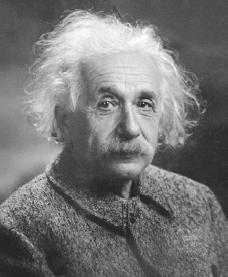
The theory of relativity came from Einstein's search for a general law of nature that would explain a problem that had occurred to him when he was sixteen: if one runs at, say, 4 4 miles per hour (6.4 kilometers per hour) alongside a train that is moving at 4 4 miles per hour, the train appears to be at rest; if, on the other hand, it were possible to run alongside a ray of light, neither experiment nor theory suggests that the ray of light would appear to be at rest. Einstein realized that no matter what speed the observer is moving at, he must always observe the same velocity of light, which is roughly 186,000 miles per second (299,274 kilometers per second). He also saw that this was in agreement with a second assumption: if an observer at rest and an observer moving at constant speed carry out the same kind of experiment, they must get the same result. These two assumptions make up Einstein's special theory of relativity. Also in 1905 Einstein proved that his theory predicted that energy (E) and mass (m) are entirely related according to his famous equation, E=mc 2 . This means that the energy in any particle is equal to the particle's mass multiplied by the speed of light squared.
Academic career
These papers made Einstein famous, and universities soon began competing for his services. In 1909, after serving as a lecturer at the University of Bern, Einstein was called as an associate professor to the University of Zurich. Two years later he was appointed a full professor at the German University in Prague, Czechoslovakia. Within another year-and-a-half Einstein became a full professor at the FIT. Finally, in 1913 the well-known scientists Max Planck (1858–1947) and Walther Nernst (1864–1941) traveled to Zurich to persuade Einstein to accept a lucrative (profitable) research professorship at the University of Berlin in Germany, as well as full membership in the Prussian Academy of Science. He accepted their offer in 1914, saying, "The Germans are gambling on me as they would on a prize hen. I do not really know myself whether I shall ever really lay another egg." When he went to Berlin, his wife remained behind in Zurich with their two sons; they divorced, and Einstein married his cousin Elsa in 1917.
In 1920 Einstein was appointed to a lifelong honorary visiting professorship at the University of Leiden in Holland. In 1921 and 1922 Einstein, accompanied by Chaim Weizmann (1874–1952), the future president of the state of Israel, traveled all over the world to win support for the cause of Zionism (the establishing of an independent Jewish state). In Germany, where hatred of Jewish people was growing, the attacks on Einstein began. Philipp Lenard and Johannes Stark, both Nobel Prize–winning physicists, began referring to Einstein's theory of relativity as "Jewish physics." These kinds of attacks increased until Einstein resigned from the Prussian Academy of Science in 1933.
Career in America
On several occasions Einstein had visited the California Institute of Technology, and on his last trip to the United States he was offered a position in the newly established Institute for Advanced Studies in Princeton, Massachusetts. He went there in 1933.
Einstein played a key role (1939) in the construction of the atomic bomb by signing a famous letter to President Franklin D. Roosevelt (1882–1945). It said that the Germans had made scientific advances and that it was possible that Adolf Hitler (1889–1945, the German leader whose actions led to World War II [1939–45]), might become the first to have atomic weapons. This led to an all-out U.S. effort to construct such a bomb. Einstein was deeply shocked and saddened when his famous equation E=mc 2 was finally demonstrated in the most awesome and terrifying way by using the bomb to destroy Hiroshima, Japan, in 1945. For a long time he could only utter "Horrible, horrible."
It would be difficult to find a more suitable epitaph (a brief statement summing up a person's person's life) than the words Einstein himself used in describing his life: "God …gave me the stubbornness of a mule and nothing else; really …He also gave me a keen scent." On April 18, 1955, Einstein died in Princeton.
For More Information
Cwiklik, Robert. Albert Einstein and the Theory of Relativity. New York: Barron's Educational Series, 1987.
Goldberg, Jake. Albert Einstein. New York: Franklin Watts, 1996.
Goldenstern, Joyce. Albert Einstein: Physicist and Genius. Springfield, NJ: Enslow Publishers, 1995.
Hammontree, Marie. Albert Einstein: Young Thinker. New York: Aladdin, 1986.
Ireland, Karin. Albert Einstein. Englewood Cliffs, NJ: Silver Burdett Press, 1989.
McPherson, Stephanie Sammartino. Ordinary Genius: The Story of Albert Einstein. Minneapolis: Carolrhoda Books, 1995.
User Contributions:
Comment about this article, ask questions, or add new information about this topic:.

Trending →
Austria will be ice-free in around 40 years, why nausea makes us lose our appetite, the fronde: from the parliamentary revolt to the revolt of the princes, was beethoven’s musicality in his genes, do monkeys also get cranky with age , albert einstein: his early life, discoveries, and theories.
“Imagination is more important than knowledge. Knowledge is limited. Imagination encircles the world.” Albert Einstein.
The brilliant theories that Albert Einstein created throughout his life, including ground-breaking work in the fields of space, time, and relativity, are what define him. His contributions have influenced numerous areas of physics and related technologies. From understanding the functioning of the universe to the precision of the Global Positioning System (GPS), from unraveling the structure of the atom to laying the foundations for the invention of the laser, Albert Einstein’s impact is far-reaching.
In 1905, based on a study of laboratory data on the photoelectric effect, Einstein formulated the quantum theory of light, a milestone he referred to as his “revolutionary” achievement. This groundbreaking work earned him the Nobel Prize in 1921. However, the subsequent development of quantum theory was carried forward by scientists like Niels Bohr , Max Born, and Werner Heisenberg. Among the other notable figures was Erwin Schrödinger, who took Einstein’s quantum theory in a direction that Einstein did not fully endorse during the 1920s. Despite this, Einstein’s legacy remains an essential pillar of modern physics and continues to inspire new generations of scientists and researchers.
“Put your hand on a hot stove for a minute, and it seems like an hour. Sit with a pretty girl for an hour, and it seems like a minute. That’s relativity.” Albert Einstein’s simple explanation of relativity to his secretary.
When Did Albert Einstein Develop the Theory of Relativity?

Albert Einstein’s most renowned contribution to physics began with his formulation of “special relativity” in 1905. He further expanded on this theory in 1915 by introducing “general relativity,” which encompassed the concept of “acceleration due to gravity.”
Einstein’s theories have brought about a significant revolution in our comprehension of space and time since Isaac Newton ‘s establishment of the laws of motion and gravity in the 17th century. In general relativity, the concept of the mysterious “ether substance” that fills space, as well as the notion of “the impact of gravity,” is discarded. Instead, the cosmos is viewed as a space-time continuum, where matter influences the bending of space, and space dictates the movement of matter.
Interestingly, while working as a full-time patent officer in Switzerland, Albert Einstein developed his special theory of relativity. According to Einstein himself in 1952, the time between conceiving his ideas in May-June 1905 and composing his essay “ On the Electrodynamics of Moving Bodies ” was just five or six weeks. However, attributing this short duration as the sole starting point for his theories would be misleading, as the foundational arguments and building blocks likely took years to develop and mature.
Albert Einstein’s Childhood
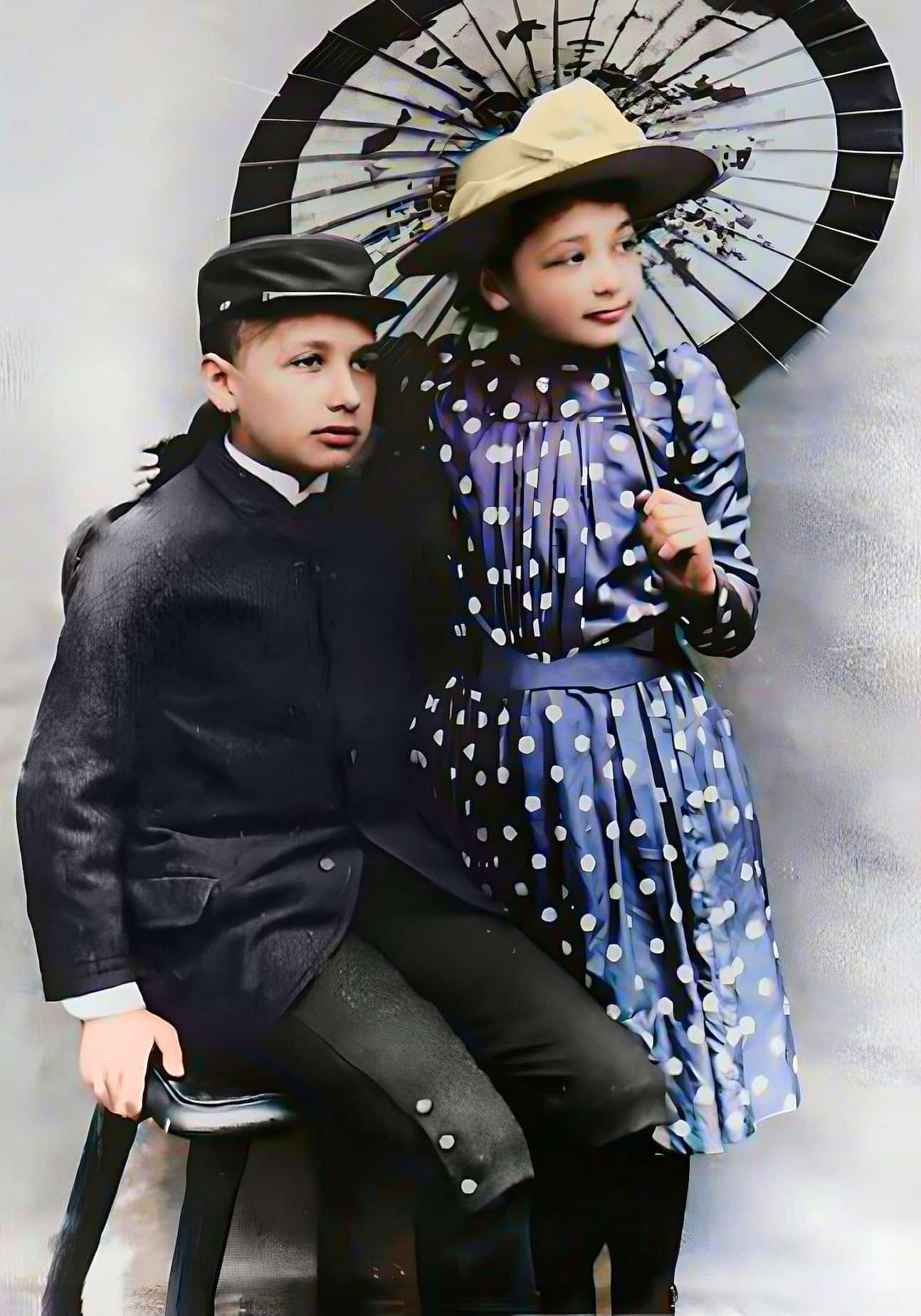
Albert Einstein’s exceptional intellectual ability cannot be solely attributed to his ancestry. His father, Hermann Einstein , worked as an average businessman and faced challenges in the field of electrical engineering. His mother, Pauline Einstein , while skilled at playing the piano, did not exhibit exceptional intellectual aptitude. Her affluent family ran a successful grain firm. Although both branches of his family were Jewish, they were not Orthodox Jews and did not engage in the study of the Torah, as they were not familiar with Hebrew.
- See also: Eduard Einstein: The Second Son of Albert Einstein
In the 1920s, Einstein became a Zionist, advocating for the establishment of a Jewish homeland. However, later in life, he expressed regret over this decision. Einstein’s remarkable intellectual accomplishments were the result of his own talents, curiosity, and dedication to scientific pursuits, rather than any particular influence from his family’s background or religious affiliation.
When reviewing Einstein’s childhood, there were initially few indications of his intellect. He was born in Ulm, Württemberg, which was part of the German Empire at that time, and he was the first child in a two-child household. As a baby, he did not speak, which caused concern for his family, leading them to seek medical advice to understand the reason behind his silence. It was only when his sister Maja Einstein was born in 1881, when Einstein was about two years old, that he began attempting to communicate.
He asked about the wheels of his new toy, seemingly trying to form whole sentences. At first, he moved his lips and carefully weighed his words in his thoughts before speaking them aloud. This behavior continued until he was about seven years old and even beyond. The household maid was skeptical about his intellectual abilities, suspecting that he might be mentally impaired. However, as history would later show, Albert Einstein’s true brilliance emerged in his later years as he made groundbreaking contributions to science and reshaped our understanding of the universe.
Indeed, Albert Einstein was not a perfect student, but he demonstrated remarkable academic achievements during his time at schools in Germany and Switzerland, as well as at the University of Zurich. Despite his academic excellence, he did not have a liking for the traditional school environment. Later in life, he strongly opposed Germany’s formal education system, particularly the aspects that reflected the conventional Prussian military culture, such as games and physical education.
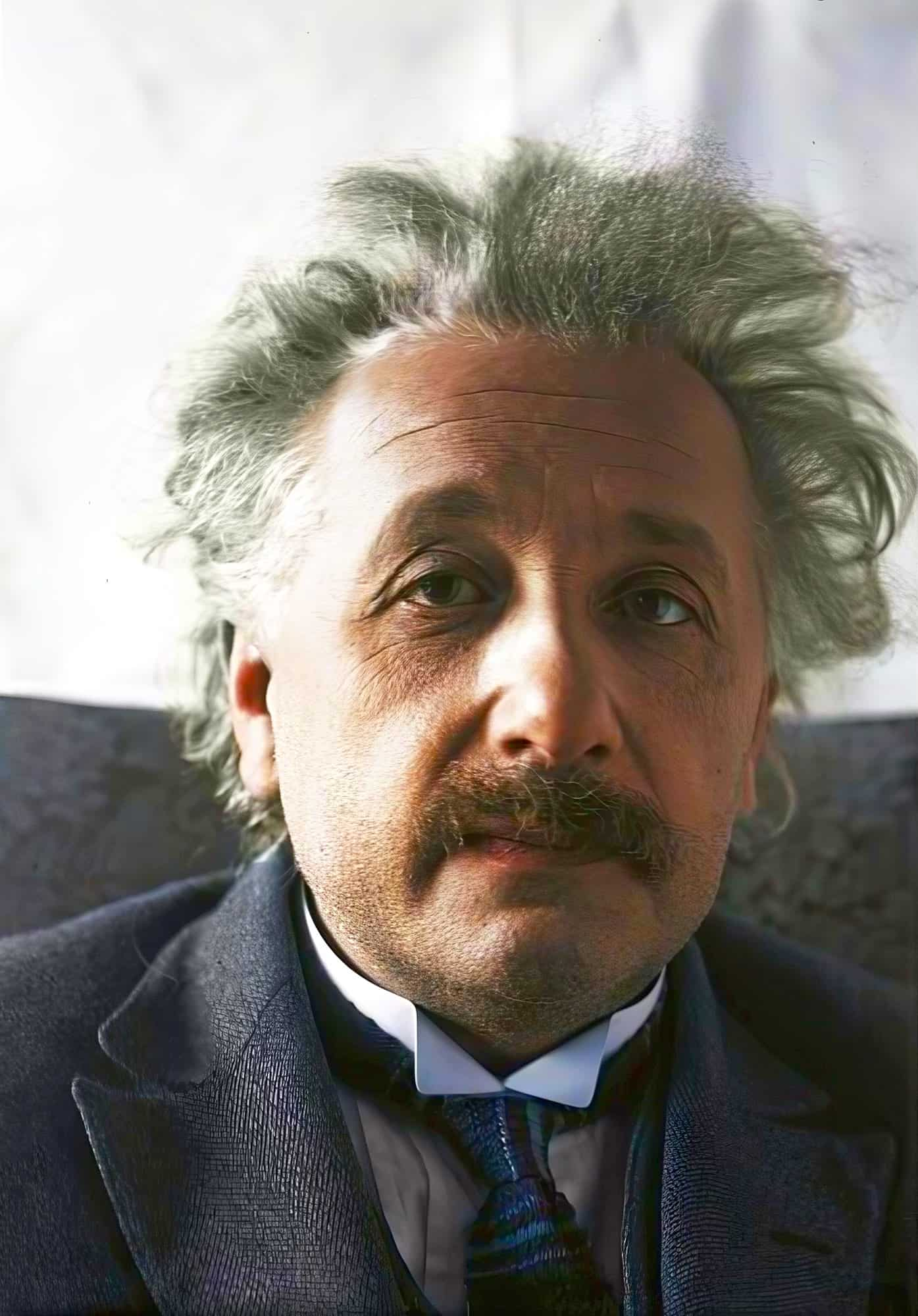
With the rise of the Nazi regime in the early 1930s, Einstein fled from Germany and sought refuge in the United States. There, he continued his scientific work and became renowned for his post-war anti-nuclear weapon campaign, advocating for peace and disarmament. Through his activism, he made his objectives clear to the rest of the world and established himself as a prominent figure in the pursuit of a safer and more peaceful world.
Albert Einstein’s strong inclination for self-learning undoubtedly played a significant role in his challenges at school. From an early age, he exhibited curiosity and began reading mathematics and science books out of his own interest. Even during his time at the Zurich school, he explored various fields of study, including the latest scientific publications. Throughout his life, Einstein never read a book solely because it was considered a classic; he only delved into books that piqued his curiosity and interest.
Similarly, Sir Isaac Newton was also an eclectic reader. Newton’s vast knowledge and discoveries were not the result of following established norms or reading many famous works of his time or from the past. Like Einstein, he pursued his own intellectual curiosity and explored topics that captivated his mind, leading to his groundbreaking contributions to science.
Both Einstein and Newton exemplify the power of individual curiosity and self-directed learning in making groundbreaking discoveries and contributions to the field of science. Their pursuit of knowledge based on genuine interest has left an enduring impact on our understanding of the universe.
How Did Albert Einstein Explain Relativity?

When Albert Einstein was 16 in 1895-96, he began to think about objects, space, and time. Based on Newton’s laws and James Clerk Maxwell’s electromagnetism equations, he reached the culmination of his work by releasing the special relativity equations in 1905 and the general relativity equations in 1915. He did this not by disagreeing with Newton or Maxwell, but by putting their ideas into a bigger picture, like putting together country maps to make a world map.
Einstein created a new point of view. He argued that mechanical rules, and even all scientific laws in the physical universe, should be the same for all observers, whether they were moving or not. In the introduction of his book ‘Über die spezielle und die allgemeine Relativitätstheorie’ (the Special and General Theory of Relativity) intended for general audiences in 1916, Albert Einstein presents a simple but profound discovery.
Consider sitting at the window of a carriage that travels uniformly—at a constant speed that never accelerates or decelerates—and letting a stone fall simply by opening your hand. If you do not account for air resistance, you will see that the stone fell in a straight line even if you are moving. However, a pedestrian standing near the tracks can see the stone falling, drawing a parabola.
Albert Einstein wonders which of these observed trajectories is the “truth”: the straight line or the parabola. Both answers are accurate. The “truth” in this case is founded on the reference object to which the observer is connected—in geometric words, the coordinate system. Is the observer on the train or on the ground? Furthermore, unlike in classical physics, there is no absolute reference frame for the cosmos in which velocity can be measured approximately. For Newton, this frame of reference was “God,” and for Maxwell, it was “ether.”
However, if the initial proposition for the immutability of natural laws was true, it should have been true not only for moving objects but also for electricity, magnetism, and light. In 1905, Maxwell’s electromagnetic wave was known to be moving at a steady speed of about 300,000 kilometers (about 186,000 miles) per second in a stationary ether. This was producing a major issue. Einstein was willing to abandon the idea of ether or aether, which had never satisfied him. However, the constant speed of light was a different problem.”
Albert Einstein and the Limits of Light

Albert Einstein had been thinking about what would happen when he chased a beam of light and reached it. In 1905, he made the following conclusion:
If I pursue a beam of light with the velocity c (velocity of light in a vacuum), I should observe such a beam of light as an electromagnetic field at rest though spatially oscillating. There seems to be no such thing, however, neither on the basis of experience nor according to Maxwell’s equations. Albert Einstein
It is impossible to attempt to reach the speed of light, which would be like watching a chase scene in a movie by freezing the image: light is only there while it moves, just as the frames of the chase scene move. Albert Einstein thought that if we could travel faster than the speed of light, we could run away from a light signal while capturing previous light signals.
As a result, our eyes must initially detect the most recent light signal before progressively detecting older signals. As a result, Einstein summarized the situation and claimed that exceeding the speed of light is impossible:
“We should catch them in a reverse order to that in which they were sent, and the train of happenings on our Earth would appear like a film shown backwards, beginning with the happy ending.” Albert Einstein
Following that, Einstein made a daring second claim: the speed of light is the same in all coordinate systems. It is not affected by the movement of a source or sensor, unlike the train example. The light beam will always appear to move away at the speed of light, no matter how quickly a hypothetical vehicle chasing it moves.
Einstein finally realized that for this to be valid, time must be relative, not absolute like space. In order for his first proposition about the “ theory of invariance ” to be compatible with the second proposition about the constant velocity of light , Newton’s “unproven hypothesis” of “classical” mechanics had to be abandoned. The first one to abandon is “the time interval between the two events is independent of the state of the reference object’s motion.” Thus, time passes at a different speed according to the person chasing the light wave. As the person’s vehicle accelerates, its time will slow down and thus cover less distance (because the distance traveled is equal to the time multiplied by the speed).
This required abandoning the idea that there is a universal quantity called time that all clocks measure. Instead, everyone would have his own personal time. Relativity, in the words of Stephen Hawking.
- See also: Lieserl Einstein: Einstein’s Hidden Child for 85 Years

In the context of space, there is a distinction between the person chasing the light and the light wave. As the person goes faster, the space contracts, and thus the person travels less. According to Albert Einstein’s relativity equations, the rate at which a person approaching the speed of light travels in a vehicle extends and contracts the time and space of an outside observer at the same rate.
Just as the train passenger who lets the stone fall from a uniformly moving train sees that the stone falls not by following a curve but by following a straight line, the person chasing the light wave does not perceive that his time is slowing or his body is contracting; only the external observer sees these effects. Everything in the vehicle is normal for the moving person. Because the person’s brain and body are affected by this speed in the same way. The brain thinks and ages slower, and its retina contracts at the same rate as the vehicle; therefore, the brain does not perceive the difference in the size of the vehicle or body.
Newton’s System Weakens
When these concepts are initially heard, they are uncommon since humans do not travel even at a very tiny proportion of the speed of light. As a result, we don’t have any relativity observations or experiences involving time slowing or space shrinking. Newton’s rules seem to regulate all human motions. These laws make no mention of the speed of light. Einstein had to work hard to make the notion of relativity stick, which is so far outside our everyday experience.
Einstein was aware of the similar ideas of Danish physicist Hendrik Lorentz and his Irish colleague George FitzGerald in the 1890s, who adopted a different theory of space contraction. These scientists believed in the concept of ether, which was rejected by Einstein. Obviously, the abandonment of the idea of an absolute time required a much greater leap in imagination. In 1902, Henri Poincare mentioned the concept of simultaneity in his book La Science et l’Hypothèse (which Einstein read at the time it was published). Poincare wrote:
We have not a direct intuition of simultaneity, nor of the equality of two durations. If we think we have this intuition, this is an illusion. Henri Poincare, La Science et l’Hypothèse
In fact, Poincare was quite close to Einstein’s theory of relativity. However, it seems that he was unable to proceed far enough since his results were too disturbing for Newtonian physics. Simultaneity is an ongoing illusion for us on Earth. We’re accustomed to it; we don’t discriminate between what is seen and what occurs at the same time. As a result, the distinction between time and local time becomes murky. Einstein, who was a generation younger than Poincare and had nothing to lose since he was unknown in 1905, could afford to be radical in his views on time.
E=mc2 and the Atomic Bomb

When Albert Einstein arrived in the United States in 1933 to join the Princeton Institute for Advanced Study, most scientists had already accepted special relativity—also known for the famous E=mc^2 formula, which relates the speed of energy, mass, and light. Regrettably, this theory was also utilized in the calculations for the atomic bomb in 1945. However, it took a considerable amount of time for general relativity, introduced in 1915, to gain full acceptance.
In his later years, from 1925 until his death in Princeton in 1955, Einstein obsessively pursued a unified theory of gravity and electromagnetism, but it appears that this endeavor may have been futile. With the advent of more precise experimental testing in both space and on Earth, Einstein’s theory of relativity, along with Newton’s and Maxwell’s equations, now forms the foundation of physics. Today, Einstein’s once arcane realm of ideas has become widely understood and acknowledged.
Albert Einstein Quotes
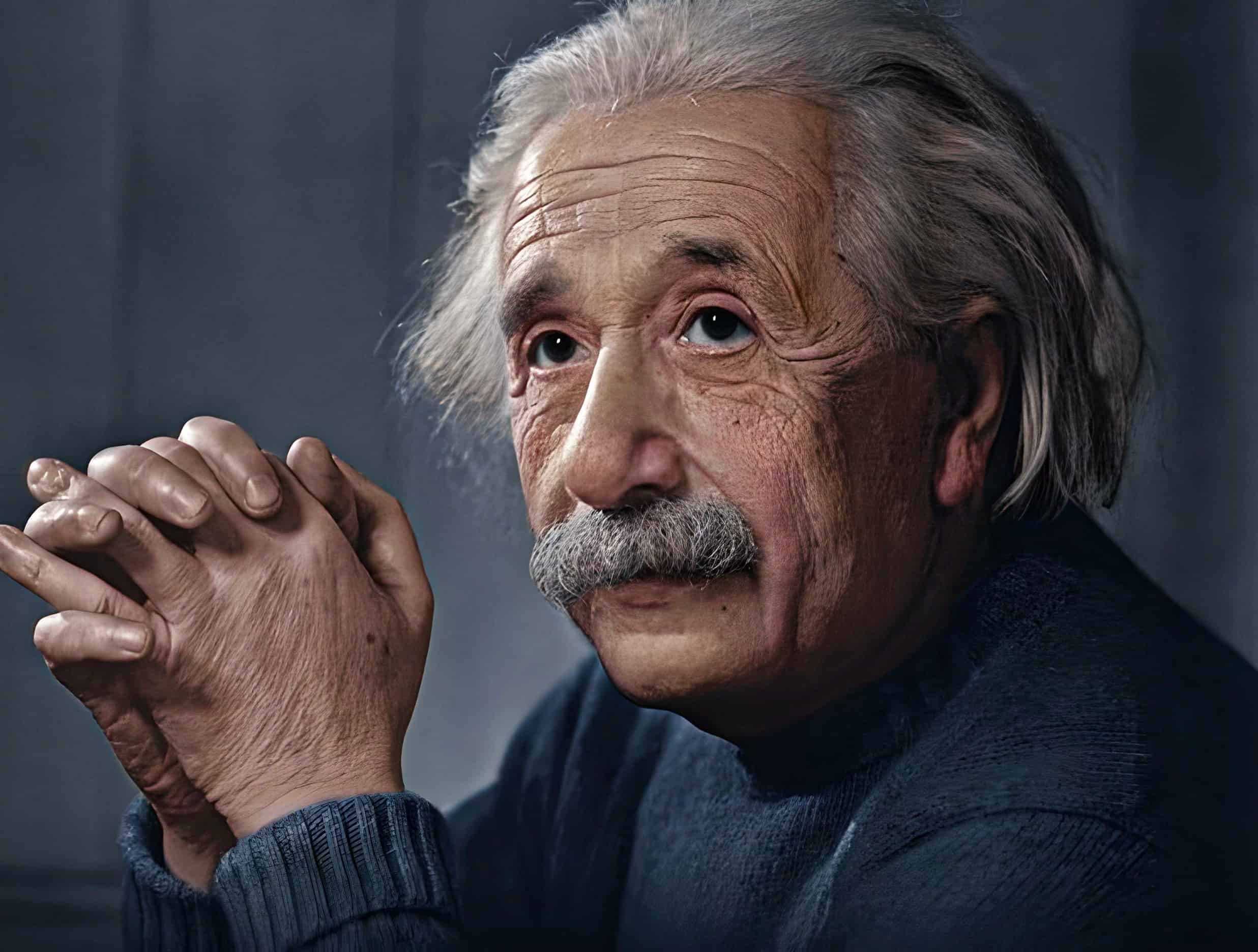
- Few are those who see with their own eyes and feel with their own hearts.
- Imagination is more important than knowledge. Knowledge is limited. Imagination encircles the world.
- I am by heritage a Jew, by citizenship a Swiss, and by makeup a human being, and only a human being, without any special attachment to any state or national entity whatsoever.
- A hundred times every day I remind myself that my inner and outer life are based on the labors of other men, living and dead, and that I must exert myself in order to give in the same measure as I have received and am still receiving.
- Unthinking respect for authority is the greatest enemy of truth.
- I would teach peace rather than war. I would inculcate love rather than hate.
- Try not to become a man of success, but rather try to become a man of value.
- Great spirits have always encountered violent opposition from mediocre minds.
- All religions, arts and sciences are branches of the same tree.
- I believe in intuitions and inspirations. I sometimes feel that I am right. I do not know that I am.
- Look deep into nature, and then you will understand everything better.
Albert Einstein at a Glance
What was albert einstein’s contribution to the field of physics.
His most famous contribution, the theory of relativity, introduced the concept of spacetime. Einstein also made contributions to the development of quantum mechanics and the study of Brownian motion.
How did Albert Einstein’s upbringing shape his scientific work?
He grew up in a secular Jewish family in Germany and received an education in math and science. As a young man, he was exposed to the work of philosophers such as Immanuel Kant and Ernst Mach, who influenced his views on the nature of reality. Later, his experiences as a patent clerk in Switzerland gave him the time and freedom to develop his ideas about relativity.
What was the significance of the famous equation E=mc²?
The equation E=mc² expresses the relationship between mass and energy. It was first proposed by Albert Einstein in 1905, as part of his special theory of relativity. The equation showed that mass and energy are interchangeable, and it has had important implications for nuclear physics and energy generation.
How did Albert Einstein’s political beliefs influence his scientific work?
He was a political activist and pacifist. He was an outspoken critic of war and militarism, and his experiences living through World War I and witnessing the rise of Nazi Germany led him to advocate for internationalism and cooperation among nations. He also believed that science had a moral responsibility to promote social justice and equality.
How did Albert Einstein die?
Albert Einstein died on April 18, 1955, at the age of 76. He had been in declining health for several years, suffering from a variety of ailments including heart problems, digestive issues, and internal bleeding.
On the day of his death, Einstein experienced an abdominal aortic aneurysm, which is a bulge in the wall of the aorta that ruptured and caused severe internal bleeding. He was rushed to the hospital but refused surgery, stating that he had lived his life and was ready to go.
Einstein’s condition quickly worsened, and he fell into a coma. He passed away early the next morning, surrounded by his family and close friends.
- Featured Image: Derived from Wikimedia Commons.
- Wolfram Research – Biography of Albert Einstein
- Nobel Prize – Biography of Albert Einstein
A Total Solar Eclipse Made Albert Einstein a Scientific Superstar
An eclipse in May 1919 had a pivotal role in proving one of Einstein’s most famous theories.
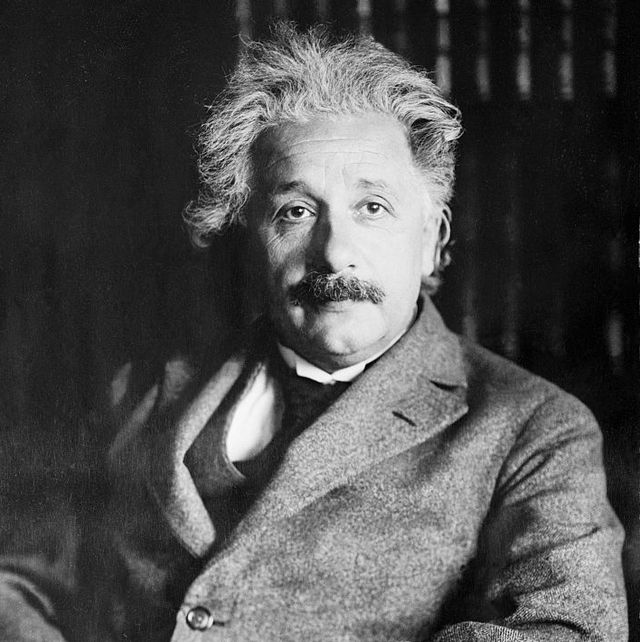
We may earn commission from links on this page, but we only recommend products we back.
A solar eclipse in May 1919 helped prove one of Albert Einstein ’s most famous hypotheses: his theory of general relativity. The discovery changed our understanding of physics and cemented Einstein’s status as one of the most influential scientists in history .
Einstein’s theory of general relativity dates back to 1905
Einstein’s theory , completed in 1915, is centered around gravity. Rather than being an invisible force that attracts objects to each other, gravity—as explained by relativity—is a curving or warping of space-time caused by concentrations of mass and energy. According to Einstein, this affects the motion of anything that passed nearby, including light.
Einstein had begun working on his theory in 1905 and was so confident in his principle that he asked researchers to carry out an eclipse experiment as early as 1911. He even raised his own money to fund it. He found a volunteer in German astronomer Erwin Freundlich in 1914, but the expedition was scrapped following the assassination of Archduke Franz Ferdinand and the outbreak of World War I.
Finally, in 1919, Einstein got his chance.
The 1919 solar eclipse experiment focused on the stars
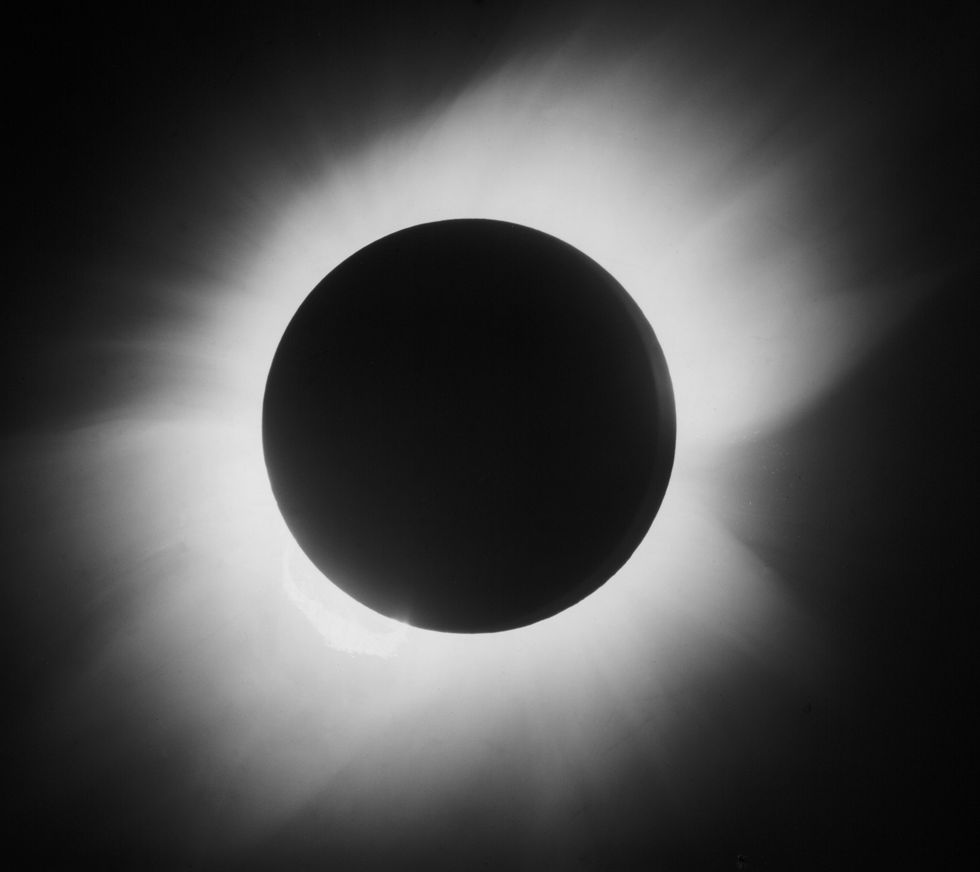
In order to test Einstein’s idea, English astronomers named Arthur Eddington and Frank Dyson launched expeditions to chart stars during the total solar eclipse on May 29, 1919. The scientists planned to pinpoint the positions of stars around the sun during “totality,” or when the sun’s light is completely blocked by the moon, and compare them to normal conditions. If there was a difference in their locations—even one so slight that it would be visible to the human eye—this would indicate the sun had deflected their light through a curving of space.
According to Smithsonian Magazine , Eddington traveled to the island of Principe, off the African coast, while Dyson sent two members of his staff to Sobral, Brazil, to perform the calculations. Whereas the 2024 eclipse has a maximum length of 4 minutes, 28 seconds along the path of totality, the duo and their teams had more than 5 minutes to examine the sky. The stars’ positions were recorded on glass plates, which were then brought back to England for further examination.
The results were, mostly, expected
Eddington and Dyson both deemed the experiment successful, as their results were very close to Einstein’s predictions for the amount of deflection. Well, at least the majority of them. One of the telescopes in Dyson’s expedition produced odd readings , with the stars looking like smudges and not rounded circles. So, he threw those respective plates out.
This has led some historians to speculate Dyson might have done so to exclude data that didn’t match the intended outcome, but University of Arkansas physics professor Daniel Kennefick, who wrote the book No Shadow of a Doubt about the 1919 eclipse and its findings, said this was highly unlikely. “It is rare to be completely neutral in science or life. Punishing Eddington for being honest in articulating his preferences is merely asking that scientists dishonestly suppress their views,” Kennefick said .
Einstein never doubted his theory
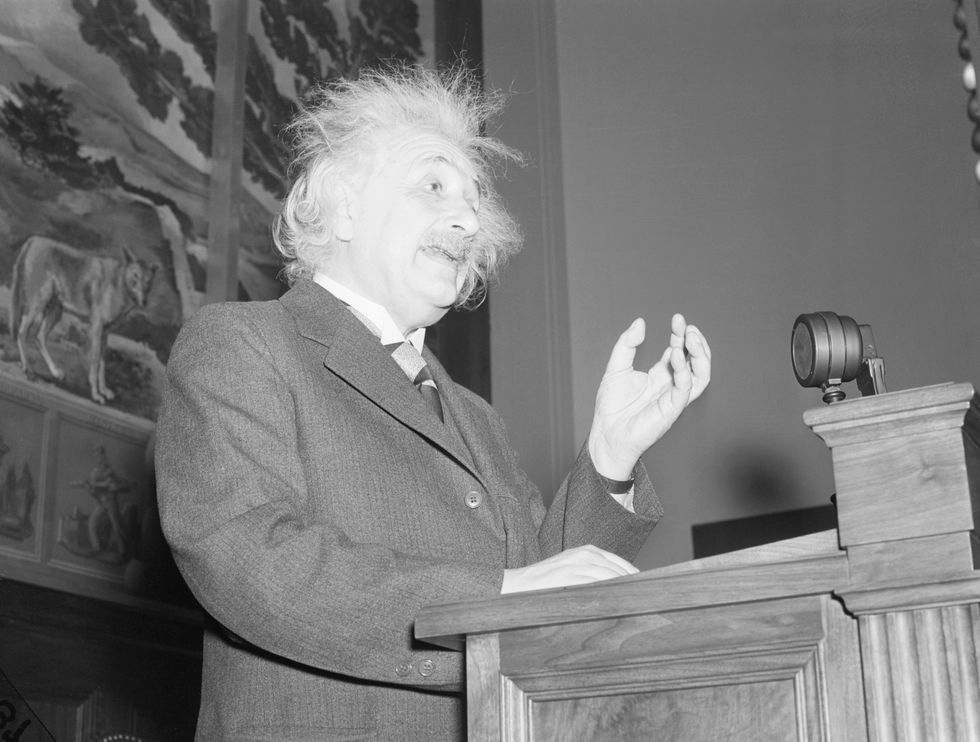
Einstein found out in September 1919 via telegram the results of the experiment had proven him correct. Although, he already knew they would.
Kennefick told Smithsonian Magazine that physicist Ilse Rosenthal-Schneider was allegedly with Einstein when he received the message and surprised by his lack of enthusiasm for the findings. “She said, ‘Well, what would you have said if the theory had found against you? Would you have been disappointed, in that event?’” Kennefick explained. “And [Einstein] smiled and said, ‘Well then I would have been sorry for the dear lord, because the theory is correct.’”
Another solar eclipse in 1922 would offer a chance to confirm Eddington and Dyson’s results, but the scientific community was eager to celebrate Einstein as a luminary before then. Eddington presented the results at a Royal Society meeting in London on November 6, 1919—in front of a picture of Sir Isaac Newton , whose ideas of gravity Einstein had revolutionized—and they were published the following day.
The Times of London called the findings a “revolution in science,” and Einstein’s popularity skyrocketed. He soon embarked on lecture tours across the United States, United Kingdom, France, and Japan, with crowds lining up to see him. According to Discover magazine , one woman even fainted upon meeting Einstein.
Two years later, in 1921, Einstein was awarded the Nobel Prize in Physics for “his services to Theoretical Physics, and especially for his discovery of the law of the photoelectric effect,” all but cementing his legacy.
The theory of general relativity continues to help us navigate our world and understand the universe beyond. According to the Royal Astronomical Society , astrophysicists use relativity to explain the movement of stars and planets and how matter behaves in extreme regions of space—particularly black holes. Non-scientists rely on relativity every day, as satellite navigation systems use it to pinpoint travel coordinates. Knowing that it all ties back to a solar eclipse, you now have a better understanding of the gravity of Monday’s eagerly-awaited celestial event.
Tyler Piccotti first joined the Biography.com staff as an Associate News Editor in February 2023, and before that worked almost eight years as a newspaper reporter and copy editor. He is a graduate of Syracuse University. When he's not writing and researching his next story, you can find him at the nearest amusement park, catching the latest movie, or cheering on his favorite sports teams.
Nobel Prize Winners

Henry Kissinger

Malala Yousafzai

Jimmy Carter

10 Famous Poets Whose Enduring Works We Still Read

22 Famous Scientists You Should Know
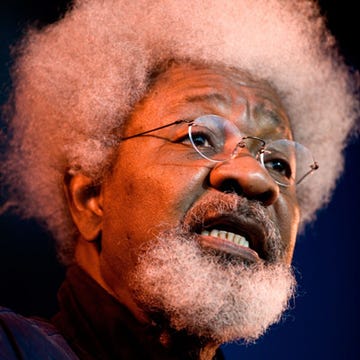
Wole Soyinka
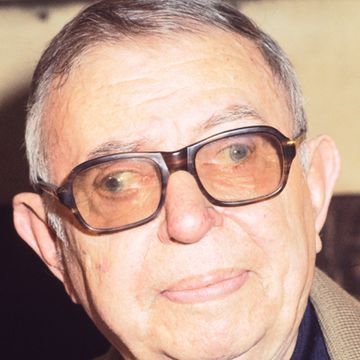
Jean-Paul Sartre
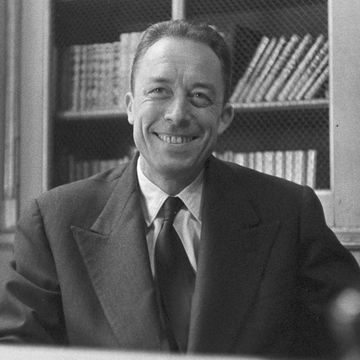
Albert Camus
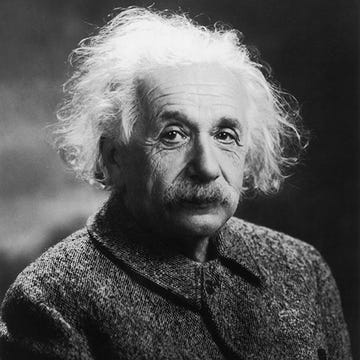
Two Books on Einstein and the World He Made
A lbert Einstein is one of the most written-about figures of the 20th century, and for good reason. His theories upended the system that physicists had used to describe the world since Newton. Along the way, he became a figure of public fascination—a true celebrity. Now two books further scrutinize different aspects of the man.
Samuel Graydon’s “Einstein in Time and Space” is not an exhaustive biography. Instead it presents 99 vignettes, most of them one to three pages long, that highlight key qualities of this complex person: the curious child, the rebellious student, the serial adulterer, the wily prankster, the loyal friend, the civil-rights defender, the intellect unsurpassed in his time. Mr. Graydon, the science editor at the Times Literary Supplement, has chosen his number of chapters in a playful homage to the atomic number of the element einsteinium.
Even if readers are familiar with these stories, Mr. Graydon’s approach often delivers a fresh take on episodes not strongly emphasized in other biographies. Here is Einstein the engineer patenting a unique refrigerator design and a hearing aid. There he is building a miniature cable car out of matchboxes for his young son Hans. “That was one of the nicest toys I had,” Hans later recalled.
As a correspondent, Einstein could be quite impish: “So, what are you up to, you frozen whale, you smoked, dried, canned piece of soul, or whatever else I would like to hurl at your head?” he once wrote to a friend. While starting his career in Bern, Switzerland, the young physicist formed a little club called the Olympia Academy with two friends to discuss science and philosophy. “Einstein, despite being the youngest,” writes Mr. Graydon, “was elected president, earning him the title ‘Albert Ritter von Steissbein’ (roughly, ‘Sir Albert, Knight of Backside’). A certificate was made up, featuring a drawing of a bust of Einstein beneath a string of sausages.”
Mr. Graydon’s stated goal is to point out “the inconsistencies inherent in a life, the inexplicable, incompatible, insane motivations that punctuate days and years.” The author notes how Einstein, a devoted pacifist, maintained a close friendship with the German chemist Fritz Haber, who pioneered the use of both chlorine and mustard gas during World War I. He observes that the deep thinker didn’t pass up the chance to party with the movie stars Charlie Chaplin, Mary Pickford and Douglas Fairbanks when out in California.
The book also includes moments of quiet dignity, such as the story of the black contralto Marian Anderson, who had been invited in 1937 to give a concert at Princeton University but was denied a room at the local hotel due to her race. Einstein simply prepared a room for her at his home, an invitation that was extended from that day forward whenever she visited the town.
Mr. Graydon has woven from these separate strands a compelling and beautifully written narrative, though I have one caveat. In his acknowledgments, the author admits that he “lightly fictionalized” a few chapters about representative days at Einstein’s office. Given the wealth of material on hand, a summary of Einstein’s life hardly needs any false embellishments.
While “Einstein in Time and Space” primarily concentrates on Einstein’s personal experiences, Hanoch Gutfreund and Jürgen Renn’s “The Einsteinian Revolution” delves deeply into his science. Mr. Gutfreund, the academic director of the Albert Einstein Archives at the Hebrew University of Jerusalem, and Mr. Renn, the director of the Max Planck Institute for the History of Science in Berlin, have written extensively on Einstein and with this book take on a particular challenge: “to dispel the popular myth that Albert Einstein, the unconventional scientific genius, instigated an overwhelming scientific revolution through pure thought alone.” They succeed in that goal, along the way providing an excellent overview of Einstein’s major discoveries, from his early work on quantum theory to general relativity, the new law of gravity that overturned Newton. It is a welcome addition to any collection of books on modern physics.
A true understanding of Einstein’s accomplishments, they write, demands a revision of the legendary concept of the “paradigm shift.” The notion was introduced in 1962 by the historian of science Thomas Kuhn, who argued that a scientific revolution suddenly replaces a previous system of knowledge with a new one unconnected to the past. But Messrs. Gutfreund and Renn prefer to view Einstein’s work as an evolutionary process, where the new system is built upon the scientific scaffolding already in place.
In the late 19th century, that scaffolding was constructed around three dominant areas of physics: mechanics, thermodynamics and electromagnetism. Troubling puzzles were beginning to arise at the intersections between these fields, and many scientists attempted to find solutions within their own isolated specialties. But Einstein—with his deep reading of the scientific literature and the philosophy of science, his constant dialogues with scientific friends, and his careful attention to new experimental discoveries—stood above those boundaries, enabling him to perceive an entirely new vista.
The authors provide a detailed examination of Einstein’s annus mirabilis in 1905, when he recognized that light can act like a particle as well as a wave; proved that atoms exist; linked matter with energy in that celebrated equation E=mc2; and, with the special theory of relativity, swept away the idea that we live in a fixed space governed by a universal clock.
Before these discoveries, the authors note, the Dutch physicist Hendrik Lorentz had developed a mathematical scheme to explain the behavior of charged particles moving through the ether—the medium that supposedly permeates physical space to allow light to travel. Lorentz’s equations foresaw many of the phenomena later explained by special relativity. But his physical interpretation, complicated and full of assumptions, was still rooted in classical physics. Einstein jettisoned this kludge by doing away with the ether, recognizing that space and time are not absolute and declaring that the speed of light is a constant whether a body is stationary or in motion.
Einstein didn’t arrive at this solution in a single eureka moment. It was the result of deep reflection over the years, influenced by such philosophers as David Hume, who questioned the causal relations between events; Ernst Mach, who objected to Newton’s idea of absolute space; and Henri Poincaré, who early on noted the possible relativity of time. Einstein stood upon the shoulders of giants to gain his new perspective.
While “The Einsteinian Revolution” is written for a general audience, a background in physics helps make certain sections more accessible. Yet the authors’ overall thesis is clear and convincing. “The substance of Einstein’s work was not new,” they stress, “but rather was the result of an accumulation of knowledge over centuries; it was his conceptual organization that was new.” Their book, along with Mr. Graydon’s “Einstein in Time and Space,” enhances our understanding of both a great scientist and an exemplary humanist.
Ms. Bartusiak is a professor emeritus at MIT and the author of “Einstein’s Unfinished Symphony.”
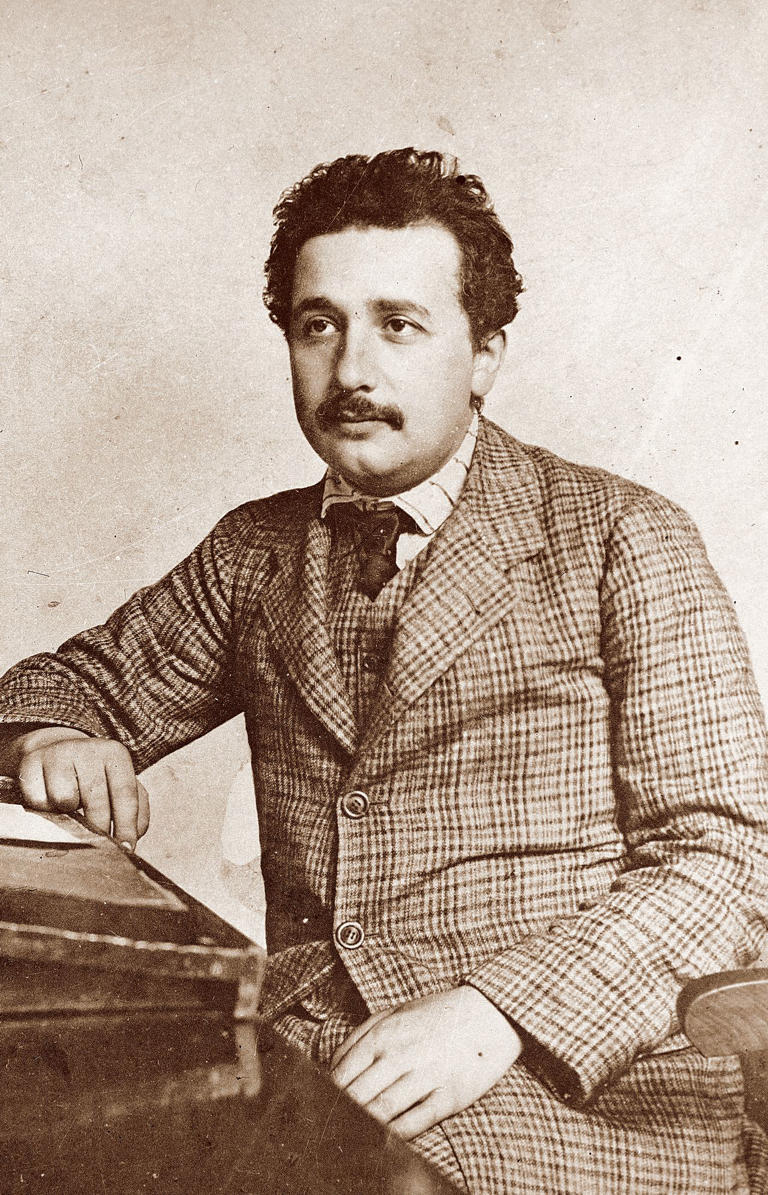
Growing Up and Early Life. Where did Albert Einstein grow up? Albert Einstein was born in Ulm, Germany on March 14, 1879. His father, Hermann, managed a featherbed business in Ulm, which was situated on the River Danube in southern Germany. Around a year after Albert was born, his father's featherbed business failed and the family moved to ...
Albert Einstein (born March 14, 1879, Ulm, Württemberg, Germany—died April 18, 1955, Princeton, New Jersey, U.S.) German-born physicist who developed the special and general theories of relativity and won the Nobel Prize for Physics in 1921 for his explanation of the photoelectric effect.
Albert Einstein ( / ˈaɪnstaɪn / EYEN-styne; [4] German: [ˈalbɛɐt ˈʔaɪnʃtaɪn] ⓘ; 14 March 1879 - 18 April 1955) was a German-born theoretical physicist who is widely held to be one of the greatest and most influential scientists of all time. Best known for developing the theory of relativity, Einstein also made important ...
Early Life, Family, and Education. Albert Einstein was born on March 14, 1879, in Ulm, Württemberg, Germany. ... His Life and Universe by Walter Isaacson and Einstein: A Biography by Jürgen ...
Einstein's Early Life (1879-1904) Born on March 14, 1879, in the southern German city of Ulm, Albert Einstein grew up in a middle-class Jewish family in Munich.
Albert Einstein was born at Ulm, in Württemberg, Germany, on March 14, 1879. Six weeks later the family moved to Munich, where he later on began his schooling at the Luitpold Gymnasium. Later, they moved to Italy and Albert continued his education at Aarau, Switzerland and in 1896 he entered the Swiss Federal Polytechnic School in Zurich to be ...
Early life Albert Einstein. Einstein was born 14 March 1879, in Ulm the German Empire. His parents were working-class (salesman/engineer) and non-observant Jews. Aged 15, the family moved to Milan, Italy, where his father hoped Albert would become a mechanical engineer. ... " Biography of Albert Einstein ", Oxford, www.biographyonline.net ...
Before E=MC2. Einstein was born in Germany in 1879. Growing up, he enjoyed classical music and played the violin. One story Einstein liked to tell about his childhood was when he came across a magnetic compass. The needle's invariable northward swing, guided by an invisible force, profoundly impressed him as a child.
Explore the life and times of Albert Einstein: The Early Years, Family Roots, Einstein's Escapes, Career Scientist. Albert Einstein's lifelong passion for physics was sparked at the age of four or five when his father showed him a small compass. Young Albert tried to imagine the mysterious force that caused the compass needle to move, and the experience awakened a sense of wonder that stayed ...
Albert Einstein. The Nobel Prize in Physics 1921. Born: 14 March 1879, Ulm, Germany. Died: 18 April 1955, Princeton, NJ, USA. Affiliation at the time of the award: Kaiser-Wilhelm-Institut (now Max-Planck-Institut) für Physik, Berlin, Germany. Prize motivation: "for his services to Theoretical Physics, and especially for his discovery of the ...
Early Life and Education . Albert Einstein was born on March 14, 1879, in Ulm, Germany to Jewish parents, Hermann and Pauline Einstein. A year later, Hermann Einstein's business failed and he moved his family to Munich to start a new electric business with his brother Jakob. ... "Biography of Albert Einstein, Theoretical Physicist." ThoughtCo ...
Einstein taught himself geometry at the age of 12, wrote his first "science paper" at age 16 and received his Ph.D. at the age of 26 in 1905—the same year he published four groundbreaking articles in physics. Even as a teenager, Einstein had already developed a profound mistrust of authority. He questioned not only his teachers but also long ...
Read on for the story of his life or jump to 5 little-known facts …. Albert Einstein: a brief biography. Born: 14 March 1879 in Germany. Married: Mileva Marić m.1903-div.1919; Elsa Löwenthal m.1919. Died: Aged 76, 18 April 1955 in New Jersey, USA. Remembered as: One of the most famous theoretical physicists of the 20th century.
Early Life and Education Albert Einstein was born on March 14, 1879 in Ulm, Germany to a middle-class Jewish family. His father, Hermann Einstein, was a salesman and engineer, while his mother, Pauline Einstein, was a talented musician. Einstein's early years were marked by curiosity and a strong interest in science.
Albert Einstein's early life and education laid the foundation for a revolutionary career in physics. Born on March 14, 1879, in the city of Ulm in the Kingdom of Württemberg, which was part of the German Empire, Einstein was the first child of Hermann and Pauline Einstein. His father, a salesman and engineer, and his mother, a homemaker ...
Early Years. Albert Einstein was born on March 14, 1879 in Ulm, Germany. He was the first child born to Hermann and Pauline, a bourgeois Jewish couple married three years earlier. Hermann began work as a merchant in the featherbed industry, but when his business collapsed, he moved his family to Munich to start an electrical-engineering ...
Albert Einstein was born in 1879 in Ulm, Germany. He was the first child born to Hermann and Pauline Einstein. Though he attended school as a young boy, he also received instruction at home on Judaism and violin. By the age of twelve he had taught himself geometry. At the age of sixteen he failed an exam in order to qualify to train as an ...
Albert Einstein: Early Life, Education, Marriage, Children, Teaching Career. He was born on 14 March 1879 in Ulm, Württemberg, Germany, to a secular, middle-class Jews.His father was Hermann ...
Albert Einstein - Physics, Relativity, Nobel Prize: After graduation in 1900, Einstein faced one of the greatest crises in his life. Because he studied advanced subjects on his own, he often cut classes; this earned him the animosity of some professors, especially Heinrich Weber. Unfortunately, Einstein asked Weber for a letter of recommendation.
Albert Einstein was born on March 14, 1879, in Ulm, Germany, but he grew up and obtained his early education in Munich, Germany. He was a poor student, and some of his teachers thought he might be retarded (mentally handicapped); he was unable to speak fluently (with ease and grace) at age nine. Still, he was fascinated by the laws of nature ...
Albert Einstein in Washington, D.C., between 1921 and 1923. When Albert Einstein arrived in the United States in 1933 to join the Princeton Institute for Advanced Study, most scientists had already accepted special relativity—also known for the famous E=mc^2 formula, which relates the speed of energy, mass, and light.
Albert Einstein was one of the greatest geniuses in the history of science. His theories, or ideas, led to new ways of thinking about the universe .
The 1919 solar eclipse experiment focused on the stars. In order to test Einstein's idea, English astronomers named Arthur Eddington and Frank Dyson launched expeditions to chart stars during ...
Samuel Graydon's "Einstein in Time and Space" is not an exhaustive biography. Instead it presents 99 vignettes, most of them one to three pages long, that highlight key qualities of this ...
3 likes, 3 comments - tiemsachcu.summer on April 3, 2024: "#sold Albert Einstein: A Biography Price: 70k/2q Provides early readers with an informative review of the life, inspirations, and cel ...

Turn Your Curiosity Into Discovery
Latest facts.
11 Facts About National Love Your Produce Manager Day April 2nd
10 Facts About National Clean Out Your Medicine Cabinet Day April 19th
40 facts about elektrostal.
Written by Lanette Mayes
Modified & Updated: 02 Mar 2024
Reviewed by Jessica Corbett

Elektrostal is a vibrant city located in the Moscow Oblast region of Russia. With a rich history, stunning architecture, and a thriving community, Elektrostal is a city that has much to offer. Whether you are a history buff, nature enthusiast, or simply curious about different cultures, Elektrostal is sure to captivate you.
This article will provide you with 40 fascinating facts about Elektrostal, giving you a better understanding of why this city is worth exploring. From its origins as an industrial hub to its modern-day charm, we will delve into the various aspects that make Elektrostal a unique and must-visit destination.
So, join us as we uncover the hidden treasures of Elektrostal and discover what makes this city a true gem in the heart of Russia.
Key Takeaways:
- Elektrostal, known as the “Motor City of Russia,” is a vibrant and growing city with a rich industrial history, offering diverse cultural experiences and a strong commitment to environmental sustainability.
- With its convenient location near Moscow, Elektrostal provides a picturesque landscape, vibrant nightlife, and a range of recreational activities, making it an ideal destination for residents and visitors alike.
Known as the “Motor City of Russia.”
Elektrostal, a city located in the Moscow Oblast region of Russia, earned the nickname “Motor City” due to its significant involvement in the automotive industry.
Home to the Elektrostal Metallurgical Plant.
Elektrostal is renowned for its metallurgical plant, which has been producing high-quality steel and alloys since its establishment in 1916.
Boasts a rich industrial heritage.
Elektrostal has a long history of industrial development, contributing to the growth and progress of the region.
Founded in 1916.
The city of Elektrostal was founded in 1916 as a result of the construction of the Elektrostal Metallurgical Plant.
Located approximately 50 kilometers east of Moscow.
Elektrostal is situated in close proximity to the Russian capital, making it easily accessible for both residents and visitors.
Known for its vibrant cultural scene.
Elektrostal is home to several cultural institutions, including museums, theaters, and art galleries that showcase the city’s rich artistic heritage.
A popular destination for nature lovers.
Surrounded by picturesque landscapes and forests, Elektrostal offers ample opportunities for outdoor activities such as hiking, camping, and birdwatching.
Hosts the annual Elektrostal City Day celebrations.
Every year, Elektrostal organizes festive events and activities to celebrate its founding, bringing together residents and visitors in a spirit of unity and joy.
Has a population of approximately 160,000 people.
Elektrostal is home to a diverse and vibrant community of around 160,000 residents, contributing to its dynamic atmosphere.
Boasts excellent education facilities.
The city is known for its well-established educational institutions, providing quality education to students of all ages.
A center for scientific research and innovation.
Elektrostal serves as an important hub for scientific research, particularly in the fields of metallurgy, materials science, and engineering.
Surrounded by picturesque lakes.
The city is blessed with numerous beautiful lakes, offering scenic views and recreational opportunities for locals and visitors alike.
Well-connected transportation system.
Elektrostal benefits from an efficient transportation network, including highways, railways, and public transportation options, ensuring convenient travel within and beyond the city.
Famous for its traditional Russian cuisine.
Food enthusiasts can indulge in authentic Russian dishes at numerous restaurants and cafes scattered throughout Elektrostal.
Home to notable architectural landmarks.
Elektrostal boasts impressive architecture, including the Church of the Transfiguration of the Lord and the Elektrostal Palace of Culture.
Offers a wide range of recreational facilities.
Residents and visitors can enjoy various recreational activities, such as sports complexes, swimming pools, and fitness centers, enhancing the overall quality of life.
Provides a high standard of healthcare.
Elektrostal is equipped with modern medical facilities, ensuring residents have access to quality healthcare services.
Home to the Elektrostal History Museum.
The Elektrostal History Museum showcases the city’s fascinating past through exhibitions and displays.
A hub for sports enthusiasts.
Elektrostal is passionate about sports, with numerous stadiums, arenas, and sports clubs offering opportunities for athletes and spectators.
Celebrates diverse cultural festivals.
Throughout the year, Elektrostal hosts a variety of cultural festivals, celebrating different ethnicities, traditions, and art forms.
Electric power played a significant role in its early development.
Elektrostal owes its name and initial growth to the establishment of electric power stations and the utilization of electricity in the industrial sector.
Boasts a thriving economy.
The city’s strong industrial base, coupled with its strategic location near Moscow, has contributed to Elektrostal’s prosperous economic status.
Houses the Elektrostal Drama Theater.
The Elektrostal Drama Theater is a cultural centerpiece, attracting theater enthusiasts from far and wide.
Popular destination for winter sports.
Elektrostal’s proximity to ski resorts and winter sport facilities makes it a favorite destination for skiing, snowboarding, and other winter activities.
Promotes environmental sustainability.
Elektrostal prioritizes environmental protection and sustainability, implementing initiatives to reduce pollution and preserve natural resources.
Home to renowned educational institutions.
Elektrostal is known for its prestigious schools and universities, offering a wide range of academic programs to students.
Committed to cultural preservation.
The city values its cultural heritage and takes active steps to preserve and promote traditional customs, crafts, and arts.
Hosts an annual International Film Festival.
The Elektrostal International Film Festival attracts filmmakers and cinema enthusiasts from around the world, showcasing a diverse range of films.
Encourages entrepreneurship and innovation.
Elektrostal supports aspiring entrepreneurs and fosters a culture of innovation, providing opportunities for startups and business development.
Offers a range of housing options.
Elektrostal provides diverse housing options, including apartments, houses, and residential complexes, catering to different lifestyles and budgets.
Home to notable sports teams.
Elektrostal is proud of its sports legacy, with several successful sports teams competing at regional and national levels.
Boasts a vibrant nightlife scene.
Residents and visitors can enjoy a lively nightlife in Elektrostal, with numerous bars, clubs, and entertainment venues.
Promotes cultural exchange and international relations.
Elektrostal actively engages in international partnerships, cultural exchanges, and diplomatic collaborations to foster global connections.
Surrounded by beautiful nature reserves.
Nearby nature reserves, such as the Barybino Forest and Luchinskoye Lake, offer opportunities for nature enthusiasts to explore and appreciate the region’s biodiversity.
Commemorates historical events.
The city pays tribute to significant historical events through memorials, monuments, and exhibitions, ensuring the preservation of collective memory.
Promotes sports and youth development.
Elektrostal invests in sports infrastructure and programs to encourage youth participation, health, and physical fitness.
Hosts annual cultural and artistic festivals.
Throughout the year, Elektrostal celebrates its cultural diversity through festivals dedicated to music, dance, art, and theater.
Provides a picturesque landscape for photography enthusiasts.
The city’s scenic beauty, architectural landmarks, and natural surroundings make it a paradise for photographers.
Connects to Moscow via a direct train line.
The convenient train connection between Elektrostal and Moscow makes commuting between the two cities effortless.
A city with a bright future.
Elektrostal continues to grow and develop, aiming to become a model city in terms of infrastructure, sustainability, and quality of life for its residents.
In conclusion, Elektrostal is a fascinating city with a rich history and a vibrant present. From its origins as a center of steel production to its modern-day status as a hub for education and industry, Elektrostal has plenty to offer both residents and visitors. With its beautiful parks, cultural attractions, and proximity to Moscow, there is no shortage of things to see and do in this dynamic city. Whether you’re interested in exploring its historical landmarks, enjoying outdoor activities, or immersing yourself in the local culture, Elektrostal has something for everyone. So, next time you find yourself in the Moscow region, don’t miss the opportunity to discover the hidden gems of Elektrostal.
Q: What is the population of Elektrostal?
A: As of the latest data, the population of Elektrostal is approximately XXXX.
Q: How far is Elektrostal from Moscow?
A: Elektrostal is located approximately XX kilometers away from Moscow.
Q: Are there any famous landmarks in Elektrostal?
A: Yes, Elektrostal is home to several notable landmarks, including XXXX and XXXX.
Q: What industries are prominent in Elektrostal?
A: Elektrostal is known for its steel production industry and is also a center for engineering and manufacturing.
Q: Are there any universities or educational institutions in Elektrostal?
A: Yes, Elektrostal is home to XXXX University and several other educational institutions.
Q: What are some popular outdoor activities in Elektrostal?
A: Elektrostal offers several outdoor activities, such as hiking, cycling, and picnicking in its beautiful parks.
Q: Is Elektrostal well-connected in terms of transportation?
A: Yes, Elektrostal has good transportation links, including trains and buses, making it easily accessible from nearby cities.
Q: Are there any annual events or festivals in Elektrostal?
A: Yes, Elektrostal hosts various events and festivals throughout the year, including XXXX and XXXX.
Was this page helpful?
Our commitment to delivering trustworthy and engaging content is at the heart of what we do. Each fact on our site is contributed by real users like you, bringing a wealth of diverse insights and information. To ensure the highest standards of accuracy and reliability, our dedicated editors meticulously review each submission. This process guarantees that the facts we share are not only fascinating but also credible. Trust in our commitment to quality and authenticity as you explore and learn with us.
Share this Fact:

- My Searches
- Watch List (0)
- Sign In
FASTBACK 43 CUSTOM BUILT BY JOHN GROSS SOLD

Used Yachts For Sale
Sail catamarans 40ft > 50ft, fastback boats for sale, fastback 43 boats for sale.

IMAGES
VIDEO
COMMENTS
S# first appeared (that we know of) in TellTales, April 1988, "On a Scale of One to Ten" by A.P. Brooks . The equation incorporates SA/Disp (100% fore triangle) and Disp/length ratios to create a guide to probable boat performance vs. other boats of comparable size. For boats of the same length, generally the higher the S#, the lower the PHRF.
AU $360,000. Rahana is a performance cruising catamaran built by a boat builder for himself from the moulds of the Fastback 43 design. Some modernising touches were added to improve an already great design. These alterations reflect on the builders 15 yrs live aboard experience on a previous cat. Hand laid in Vinylester resin with solid glass ...
One of the delightful features of this design is the forward deck lounge area, as well as a secure and safe place to sit it provides an excellent stowage space for surfboards and similar watercraft. She represents exceptional value and is a genuine step aboard and cruise away proposition. Specs. Length: 13.9m (43 feet) Beam: 6.4m. Draft: 1m/ 1.8m.
43' 1999 Custom Gross Fastback 43 Carnarvon WA Australia Ensign Yacht Brokers Sail Diesel Single $144,501 On Market: 40 days. Ready for quick comfortable cruising? This Fastback 43 has been extensively set up and is ready to set sail to her next destination. The second to last 43 produced she was professional built and fitted out by designer ...
Model: Used Fastback 43 Custom, Hull:Fibreglass/grp Hand Laid Vinylester Resin, Category: Sail Boats | Boats Online Sailing Catamaran, State: Queensland (Qld), Description: Rahana is a performance cruising catamaran built by a boat builder for himself from the moulds of the Fastback 43 design. Some
Gross Fastback 43 "Rampager" One of the well known and highly respected Fastback 43s. This one was launched in Western Australian by its current and original owner. She ... Price : $ 230,000. Length : 43' Year : 1995. NEWSLETTER SIGN UP GET THE LATEST MULTIHULL CENTRAL NEWS Sign Up Now. Catamaran Sailing School.
Fastback Catamaran Owners, Tin Can Bay Queensland. 293 likes · 3 talking about this. This page is for those who own, or are interested in production fibreglass Fastback catamarans, built in Brisbane...
Fastback Catamaran Owners. ·. November 13, 2019 ·. The Skipper and First Mate of Fastback 33E DECKA are in the process of buying Fastback 43 BACH & BYTE, and after our 10 seasons 0f Cruising North Queeensland will be putting our much loved "DECKA" up for sale. We have made many friends and during the Cruising and Fishing lifestyle my Galley ...
Fastback 43 Custom. Rahana is a performance cruising catamaran built by a boat builder for himself from the moulds ... LOCATION: Pangkor Marina, Asia 44' / 13.41m; 2013; AU $360,000; Fastback 32. Late model Fastback 32 production fibreglass catamaran with current 2023 survey in excellent ... LOCATION: Gold Coast Woongoolba QLD, Queensland 32' 6 ...
Fastback 43 Custom. Rahana is a performance cruising catamaran built by a boat builder for himself from the moulds of the Fastback 43 design. Some...Find out more
Lightwave Yachts build some excellent cruising boats with more than reasonable performance figures, they too have identified a need to offer something more for the performance minded sailor, and have recently launched a Lightwave 38 with minor modifications to enhance performance. ... alongside or after Farrier 680s a Rogers 32 and a Fastback ...
Lagoon have released the first images of their new model, the Lagoon 43. New for 2024, the Lagoon 43 pulls in design elements of the 55, 51 and 60 into a new forty-three footer sailing catamaran. Read our Lagoon 43 Review for more details on this sailing catamaran. ️ More details: on "Club Lagoon". She'll be shown at the Cannes Yachting ...
- Late model Fastback 32 catamaran production solid GRP vinylester resin hulls & deck (not cored or glass over ply) with current 2023 insurance survey - Fully covered bridgedeck saloon with opening sliding hatch for helm position & reversable seat
Fastback 43: Sailing Catamaran for Sale | Fibreglass/grp Solid Fibreglass Hulls Sail Boats | Boats Online
MORE INFORMATION ABOUT LAGOON 43. Along with the Lagoon 60, the Lagoon 43 will be on display during the next Yachting Cannes Festival from September 10 to 15, 2024. MEET THE LAGOON 43 IN CANNES. Pleasant, generous and adaptable, the Lagoon 43 is the promise of memorable moments at sea, thanks to a catamaran that adapts to every whim.
The Lagoon 43 has the first semi-fly of the range, a new social space on the catamaran. This area is integrated into the coachroof, with comfortable U-shaped seating and a forward sun lounge area that is easily accessed from the helm. The Flybridge up top beside the port raised helm provides another area to enjoy at anchor or on calmer days.
In 1938, it was granted town status. [citation needed]Administrative and municipal status. Within the framework of administrative divisions, it is incorporated as Elektrostal City Under Oblast Jurisdiction—an administrative unit with the status equal to that of the districts. As a municipal division, Elektrostal City Under Oblast Jurisdiction is incorporated as Elektrostal Urban Okrug.
First S-400 bltn, Elektrostal, Moscow.
There are a wide range of Power Catamaran boats for sale from popular brands like World Cat, Aquila and Twin Vee with 533 new and 701 used and an average price of $457,008 with boats ranging from as little as $18,176 and $7,244,759. High performance boats for sale.
40 Facts About Elektrostal. Elektrostal is a vibrant city located in the Moscow Oblast region of Russia. With a rich history, stunning architecture, and a thriving community, Elektrostal is a city that has much to offer. Whether you are a history buff, nature enthusiast, or simply curious about different cultures, Elektrostal is sure to ...
Pangkor Marina, Asia. 44'. 13.41m. 2013. AU $360,000. Find a full range of Fastback 43 Boats For Sale in Australia. New and Used boats for sale.
Fastback 43 Custom Built By John Gross: Sailing Catamaran for Sale | Fibreglass/grp Sail Boats | Boats Online